He's only orchestrated two drafts for the Bills in his tenure as general manager. Though it's a small sample size, Brandon Beane has already gotten a label from NFL analysts and even some of his fellow GMs as an aggressive deal-maker when it comes to the draft.
In the two drafts that Beane has run for Buffalo, he has traded up, either leading up to the draft or during the draft, five times, with three coming in 2018 and two more in 2019. Those five trades landed QB Josh Allen (two separate moves up), LB Tremaine Edmunds, OT Cody Ford and TE Dawson Knox.
"When we want to acquire someone, seeing if there's a guy that I think fits a need and the value, that's probably where some people maybe I get too aggressive in the draft," said Beane. "But if there's a guy that I think is a real sure fit – If I overpaid a little bit, so be it. It's better than waiting, sitting on my hands and I'm not really fired up about a guy when my pick comes up. That's just my viewpoint, that may not be 31 other GMs but that's how I see it."
Scroll through to view photos of prospects that some mock draft experts have Buffalo selecting in the second or third round of the 2020 NFL Draft.
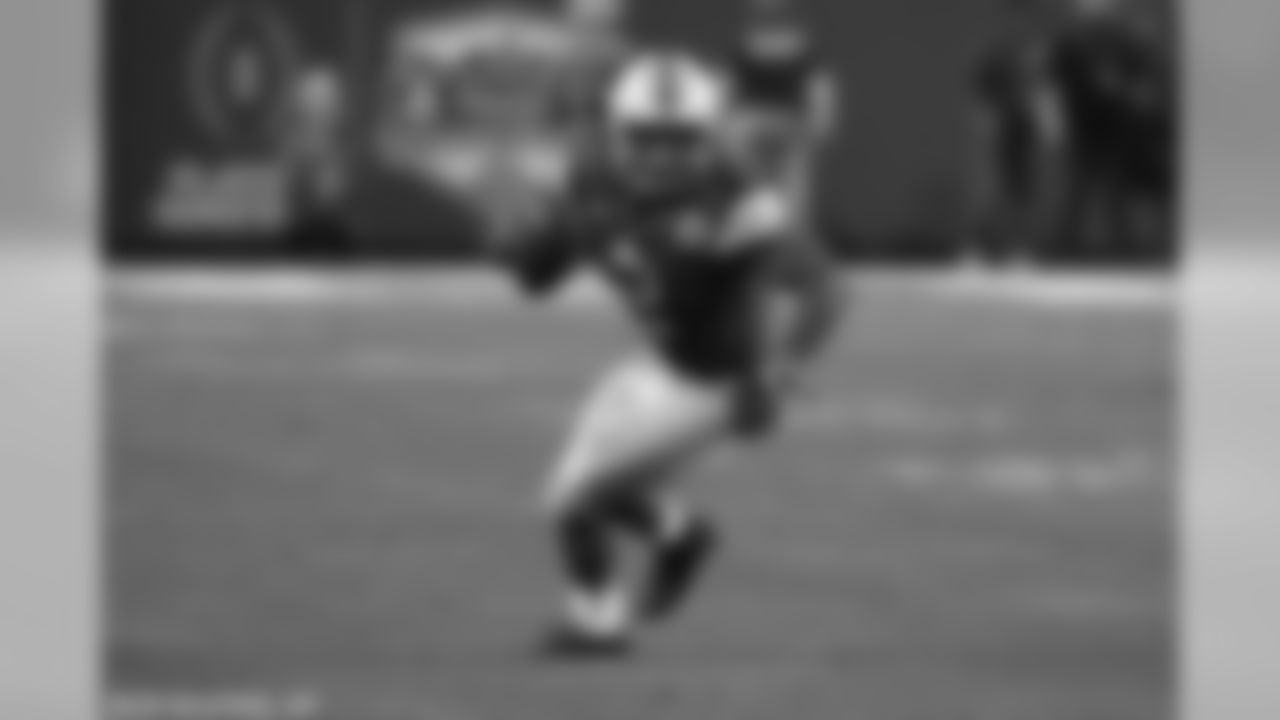
J.K. Dobbins | RB | Ohio State
Dobbins certainly fits the mold of a three down back that teams use in a variety of ways in today's NFL. He could be a nice addition for Buffalo on offense to go with their current group.
Ohio State running back J.K. Dobbins (2) during the first half of the Fiesta Bowl NCAA college football game against Clemson, Saturday, Dec. 28, 2019, in Glendale, Ariz. (AP Photo/Rick Scuteri).
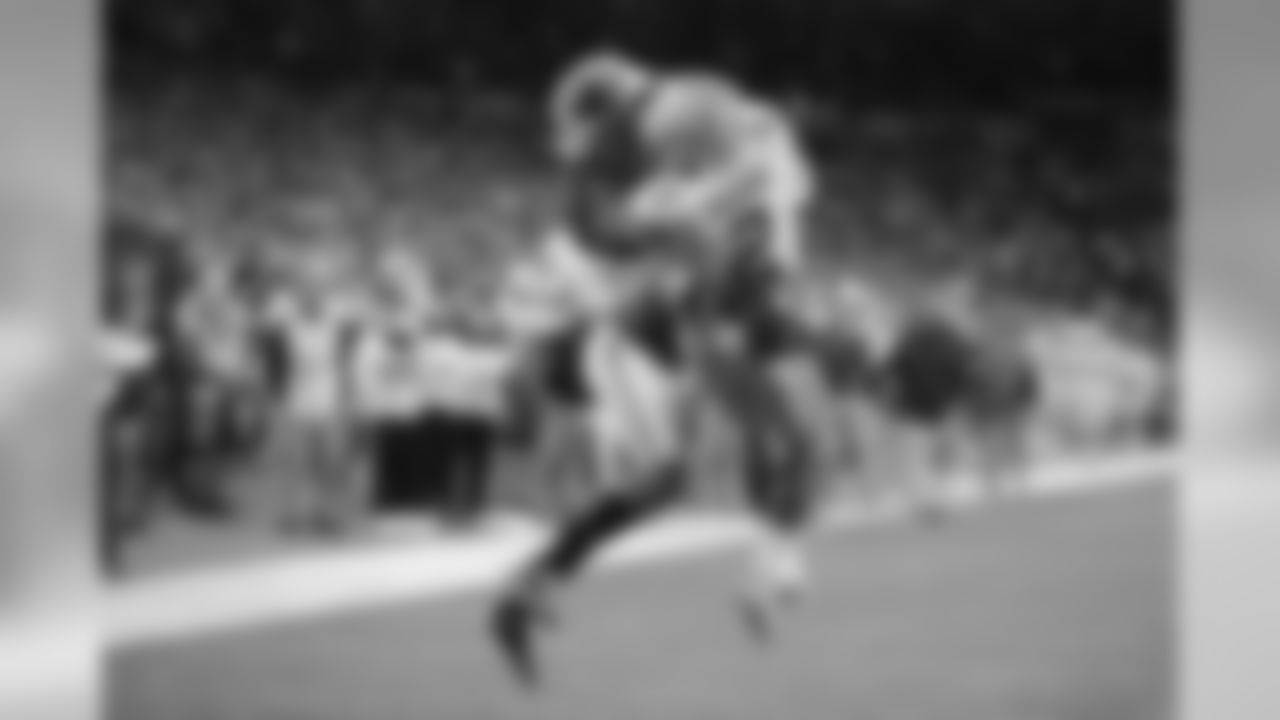
J.K. Dobbins | RB | Ohio State
Dobbins certainly fits the mold of a three down back that teams use in a variety of ways in today's NFL. He could be a nice addition for Buffalo on offense to go with their current group.
Ohio State running back J.K. Dobbins (2) goes in for a touchdown against Wisconsin cornerback Faion Hicks (1) during the first half of the Big Ten championship NCAA college football game, Saturday, Dec. 7, 2019, in Indianapolis. (AP Photo/Michael Conroy)
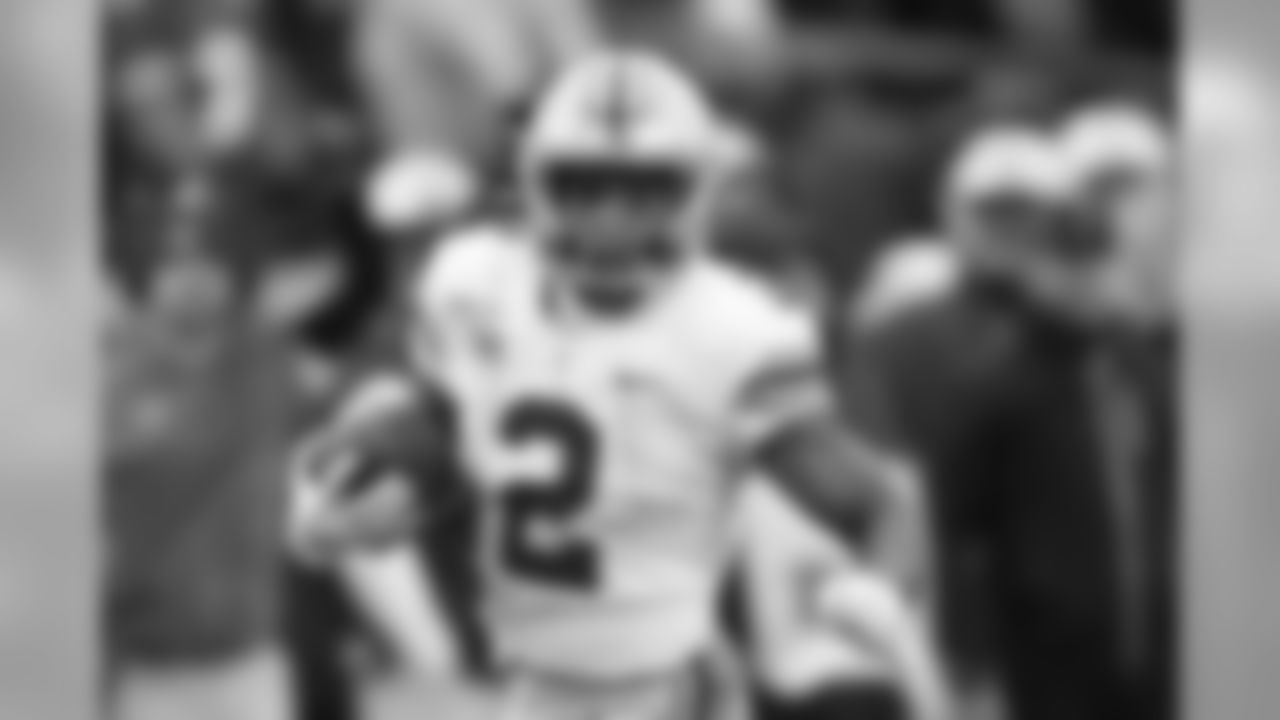
J.K. Dobbins | RB | Ohio State
Dobbins certainly fits the mold of a three down back that teams use in a variety of ways in today's NFL. He could be a nice addition for Buffalo on offense to go with their current group.
Ohio State running back J.K. Dobbins runs for a 33-yard touchdown against Michigan in the second half of an NCAA college football game in Ann Arbor, Mich., Saturday, Nov. 30, 2019. (AP Photo/Paul Sancya)
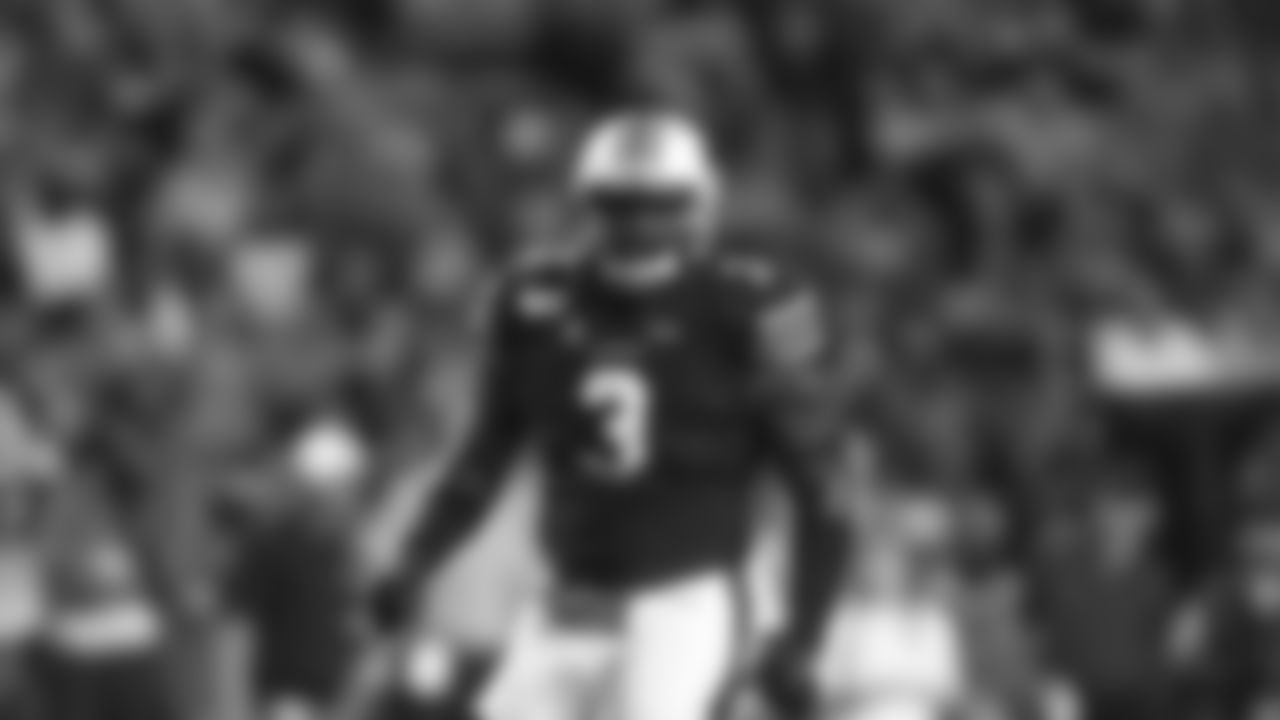
Marlon Davidson | DE | Auburn
Davidson plays the run very well on the edge of the defensive line, which could make him an option for the Bills on Day 2. He was certainly productive against some of the top offenses in the country as well.
Auburn defensive end Marlon Davidson (3) lines up for a play during the second half of an NCAA college football game against Kent State, Saturday, Sept. 14, 2019, in Auburn, Ala. (AP Photo/Butch Dill)
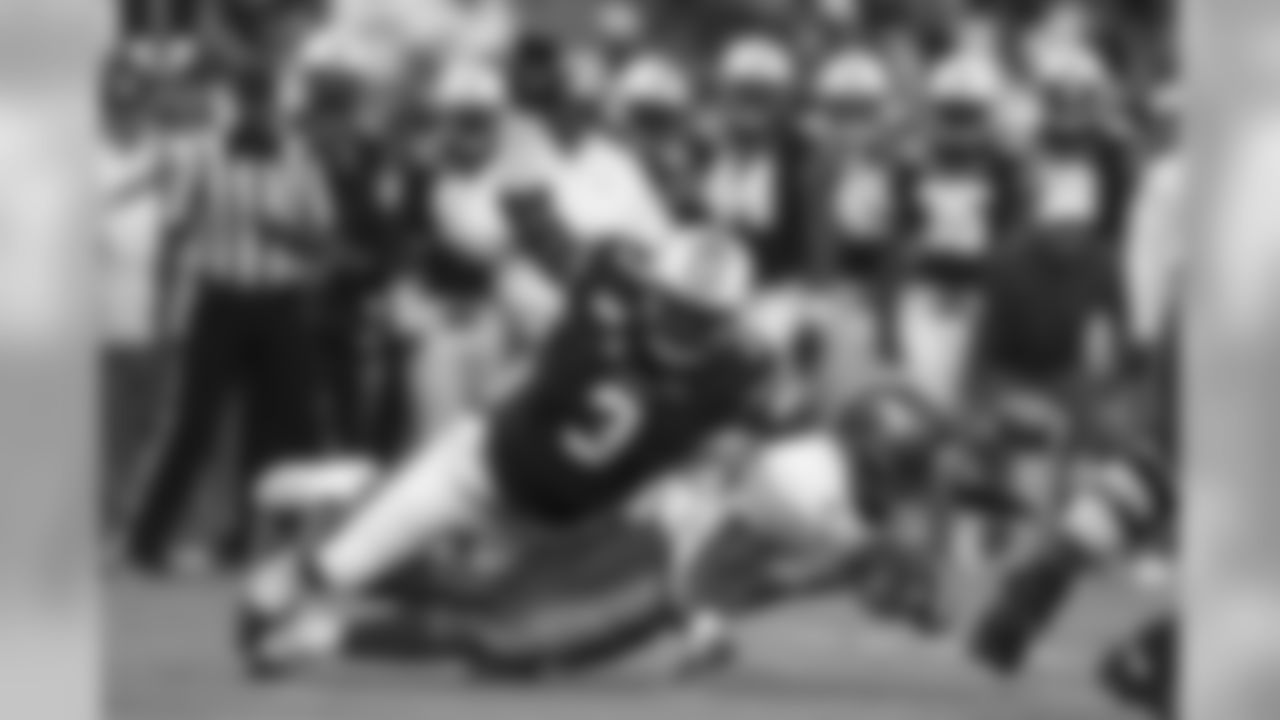
Marlon Davidson | DE | Auburn
Davidson plays the run very well on the edge of the defensive line, which could make him an option for the Bills on Day 2. He was certainly productive against some of the top offenses in the country as well.
Tulane running back Amare Jones is tackled for a loss by Auburn defensive end Marlon Davidson (3) during the first quarter of an NCAA college football game Saturday, Sept. 7, 2019, in Auburn, Ala. (AP Photo/Butch Dill)
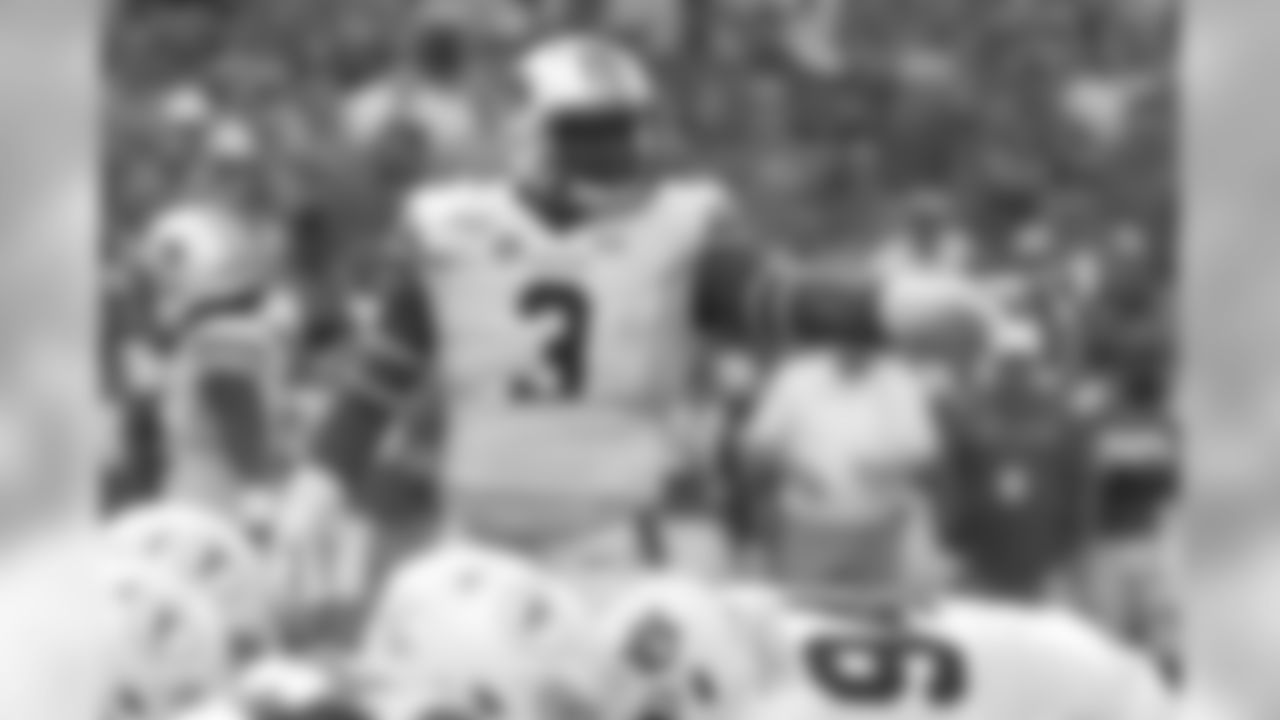
Marlon Davidson | DE | Auburn
Davidson plays the run very well on the edge of the defensive line, which could make him an option for the Bills on Day 2. He was certainly productive against some of the top offenses in the country as well.
FILE - In this Oct. 5, 2019, file photo, Auburn defensive end Marlon Davidson (3) signals to teammates before a play during the first half of an NCAA college football game against Florida, in Gainesville, Fla. Davidson was selected to The Associated Press All-Southeastern Conference football team, Monday, Dec. 9, 2019.(AP Photo/John Raoux, File)
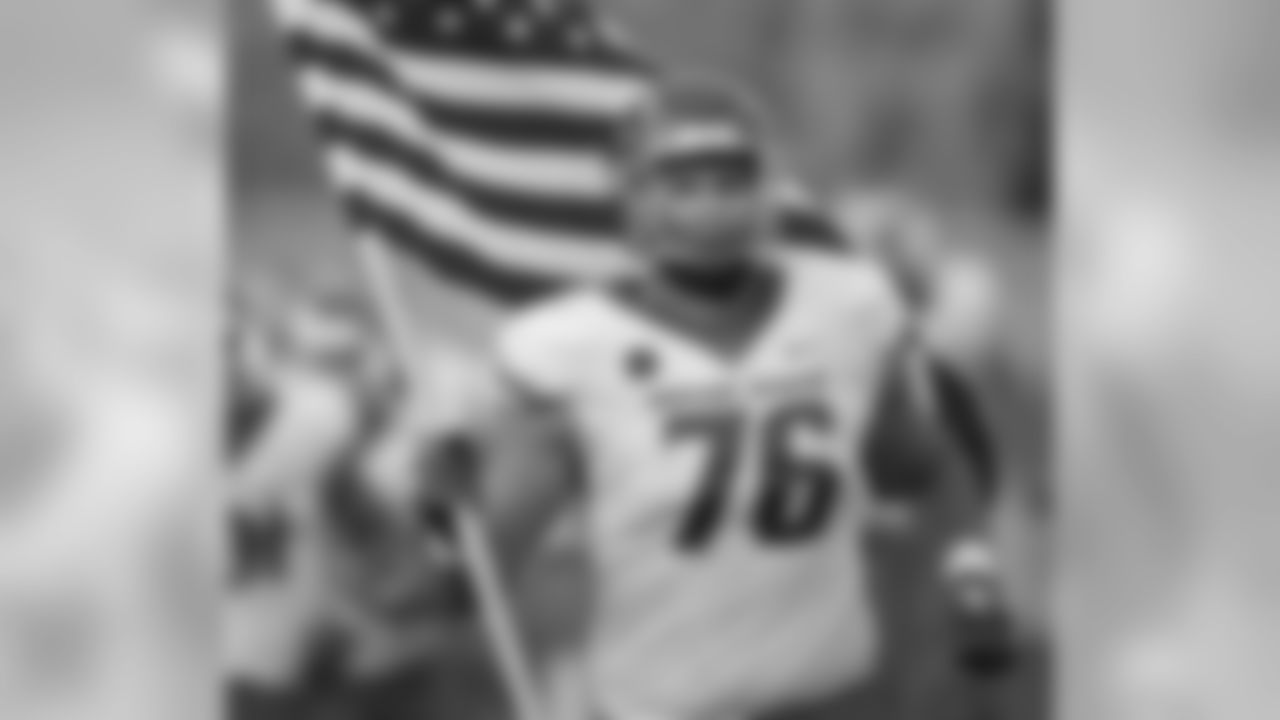
Ezra Cleveland | OT | Boise State
Cleveland has a projectable frame and could be a nice piece to add to Buffalo's current group at OL.
Boise State offensive lineman Ezra Cleveland carries out a United States flag as the team takes the field to face Air Force in an NCAA college football game Saturday, Oct. 27, 2018, at Air Force Academy, Colo. (AP Photo/David Zalubowski)
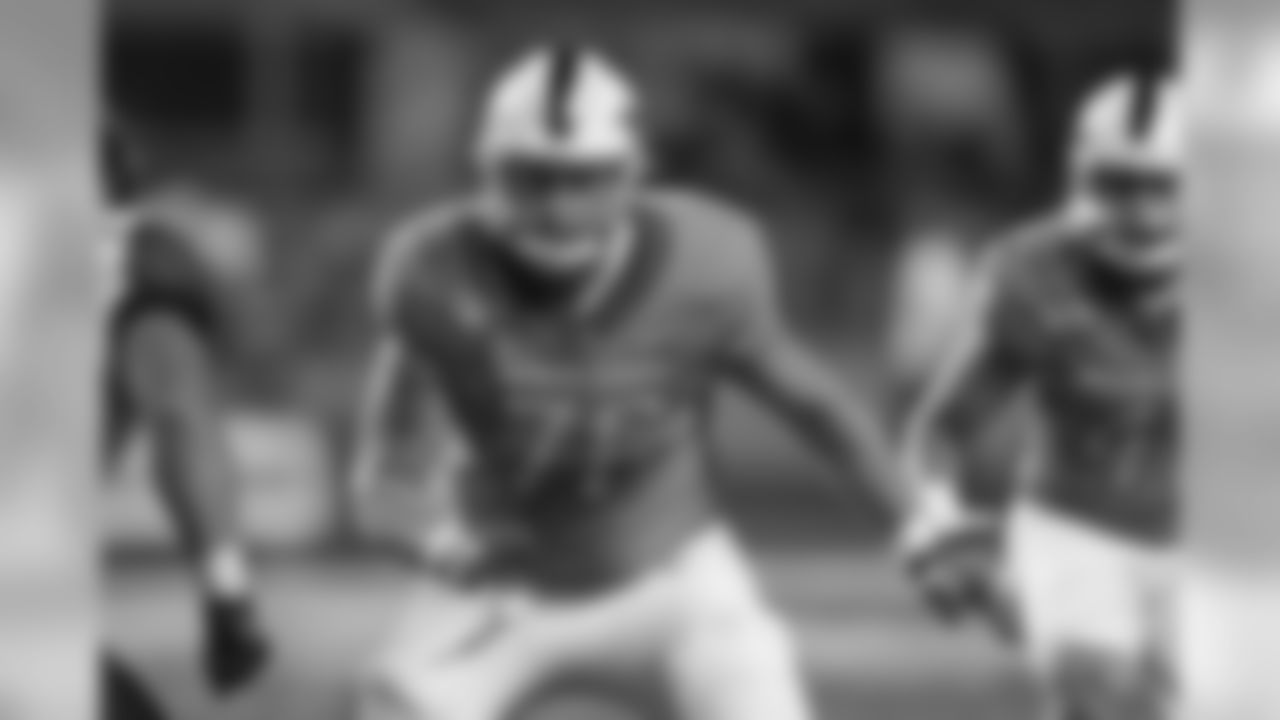
Ezra Cleveland | OT | Boise State
Cleveland has a projectable frame and could be a nice piece to add to Buffalo's current group at OL.
Boise State offensive lineman Ezra Cleveland (76) during the first half of an NCAA college football game against Hawaii, Saturday, Oct. 12, 2019, in Boise, Idaho. Boise State won 59-37. (AP Photo/Steve Conner)
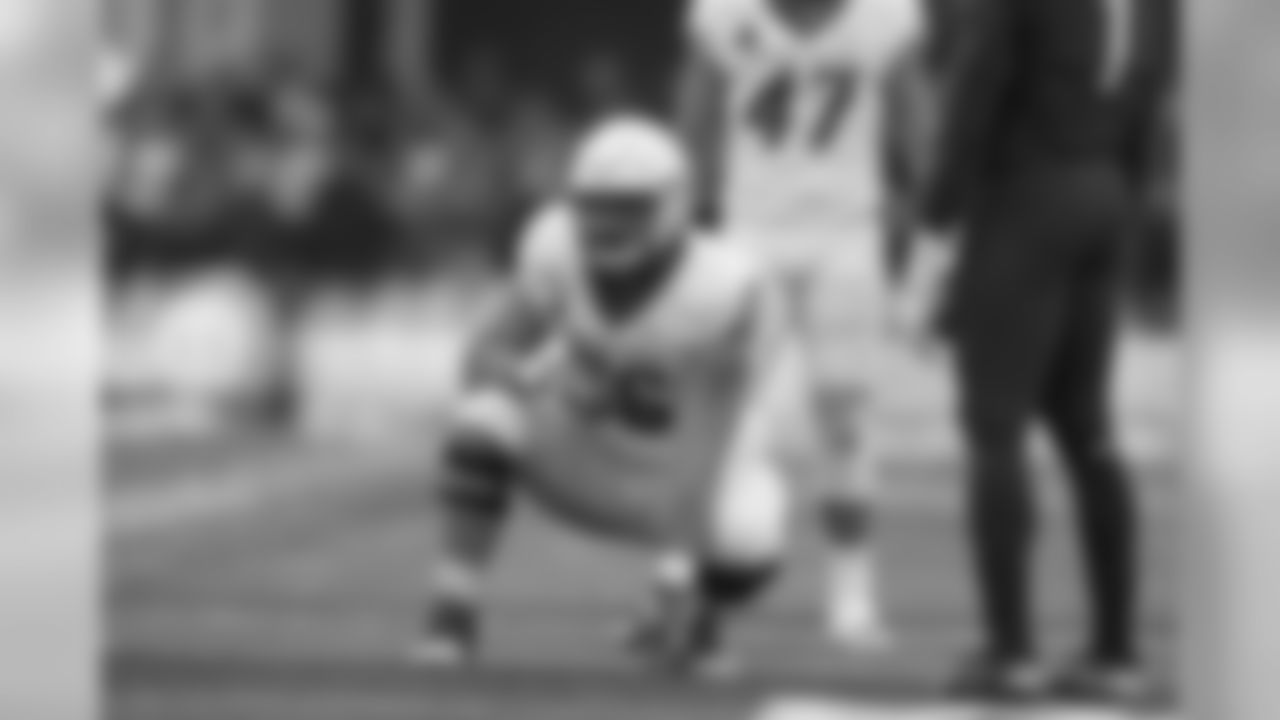
Ezra Cleveland | OT | Boise State
Cleveland has a projectable frame and could be a nice piece to add to Buffalo's current group at OL.
Boise State offensive lineman Ezra Cleveland in the first half of an NCAA college football game Friday, Nov. 29, 2019, in Fort Collins, Colo. (AP Photo/David Zalubowski)
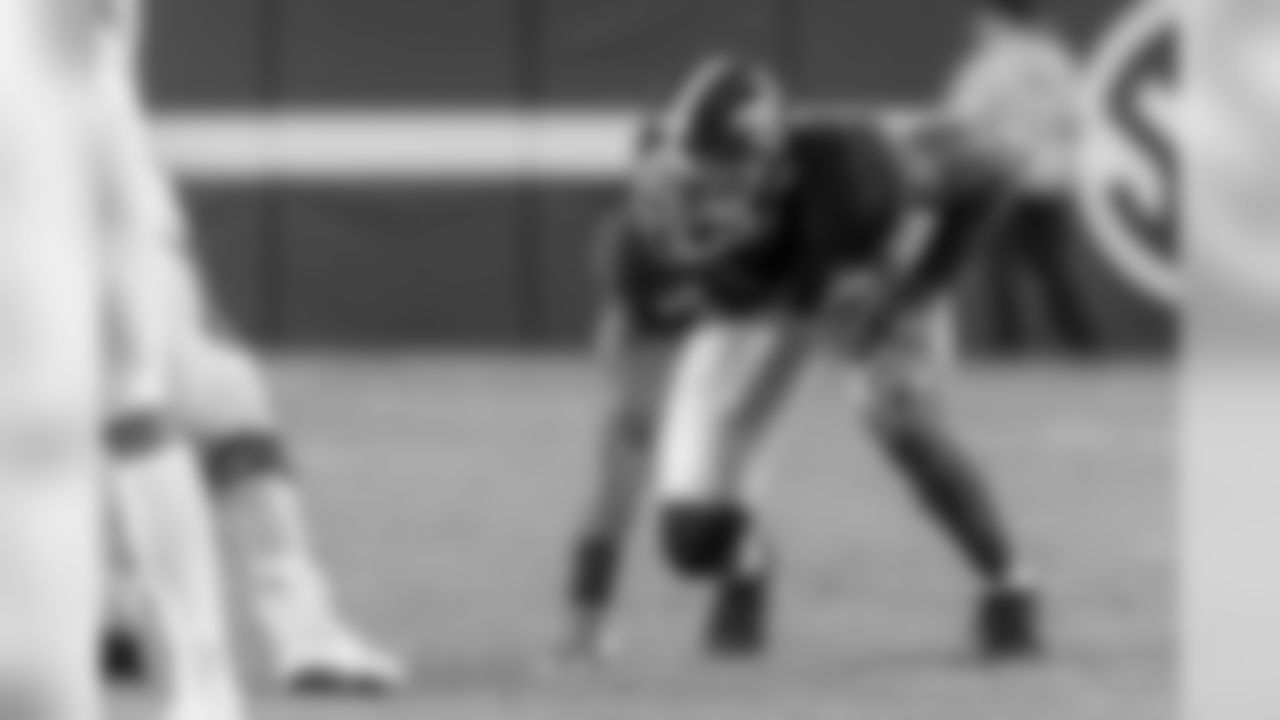
EDGE | Terrell Lewis | Alabama
Lewis could provide some "nasty" on the edge of Buffalo's pass rush and would be in line to help contribute on defense as a rookie.
Alabama linebacker Terrell Lewis (24) lines up on the edge to rush the quarterback against Arkansas during the second half of an NCAA college football game, Saturday, Oct. 26, 2019, in Tuscaloosa, Ala. (AP Photo/Vasha Hunt)

EDGE | Terrell Lewis | Alabama
Lewis could provide some "nasty" on the edge of Buffalo's pass rush and would be in line to help contribute on defense as a rookie.
Alabama linebacker Terrell Lewis (24) gets set against LSU during the second half of an NCAA football game Saturday, Nov. 9, 2019, in Tuscaloosa, Ala. LSU won 46-41. (AP Photo/Vasha Hunt)
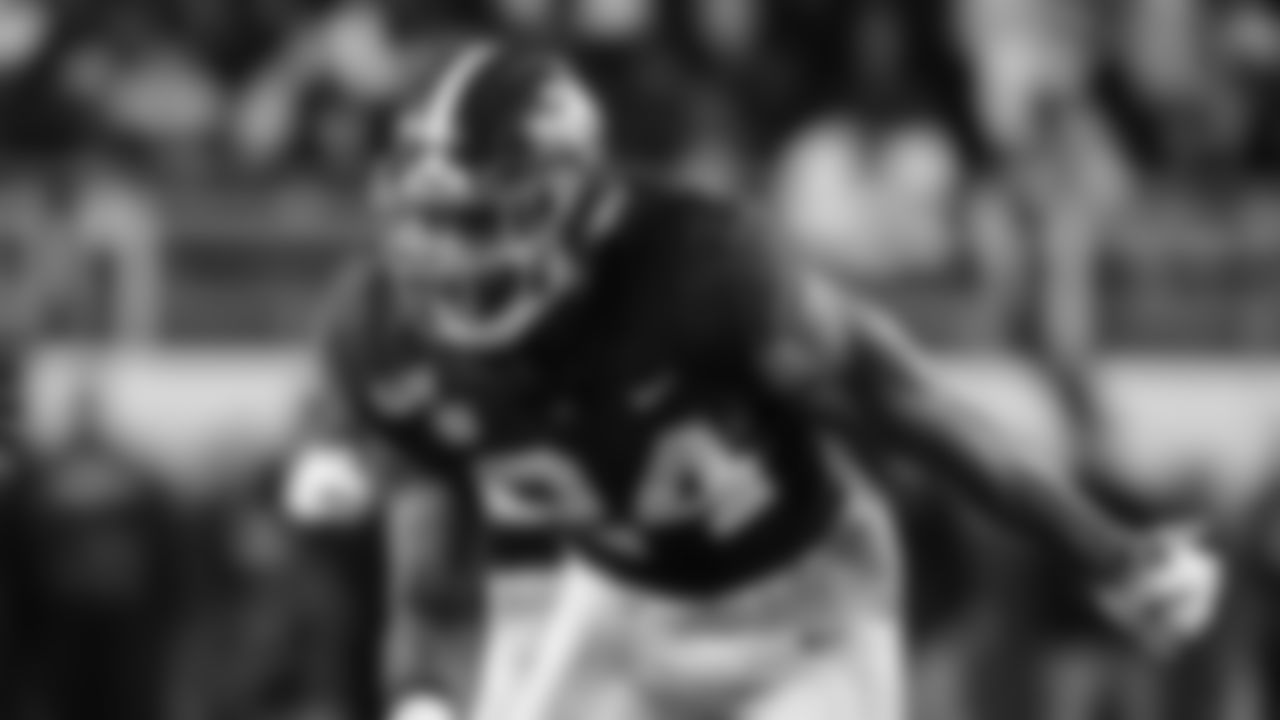
EDGE | Terrell Lewis | Alabama
Lewis could provide some "nasty" on the edge of Buffalo's pass rush and would be in line to help contribute on defense as a rookie.
Alabama linebacker Terrell Lewis in an NCAA football game Saturday, Nov. 9, 2019, in Tuscaloosa, Ala. (AP Photo/Vasha Hunt)
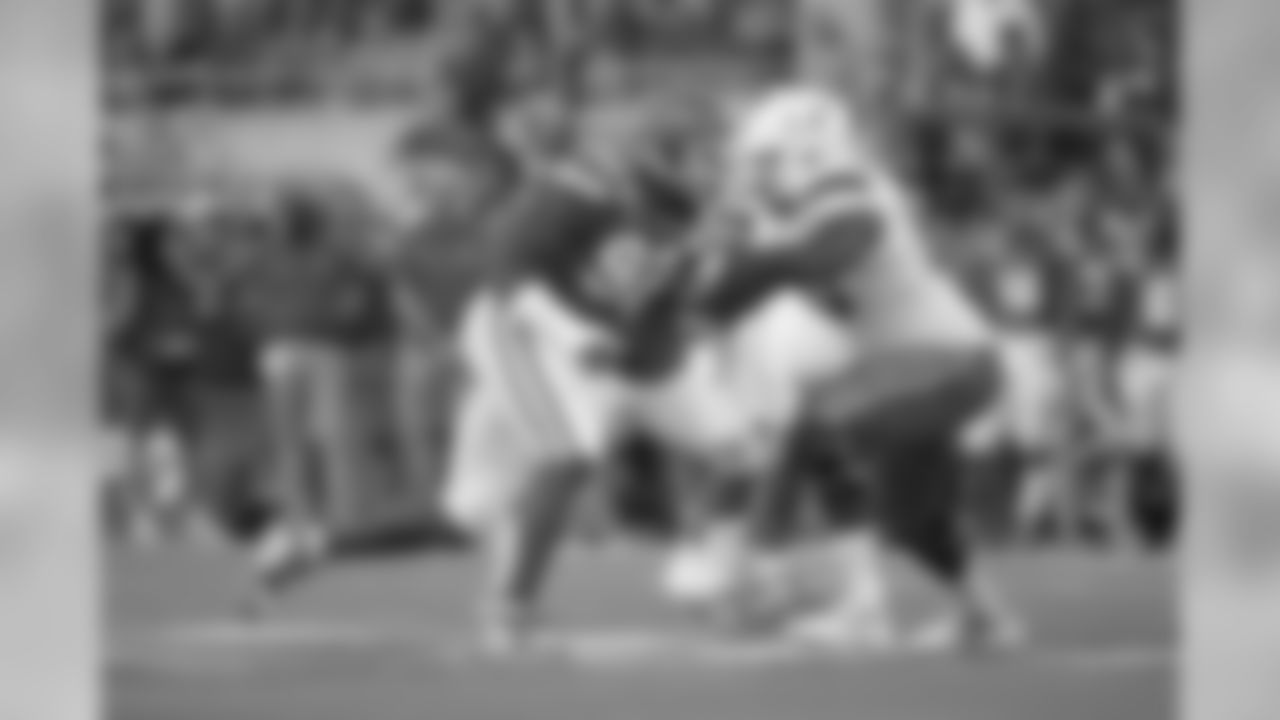
EDGE | Jabari Zuniga | Florida
Zuniga has all the tools teams look for in impact pass rushers, and could make sense for Buffalo at the right spot in the draft.
Miami offensive lineman Zion Nelson (60), right, blocks against Florida defensive lineman Jabari Zuniga (92) during the first half of an NCAA college football game Saturday, Aug. 24, 2019, in Orlando, Fla. (AP Photo/Phelan M. Ebenhack)
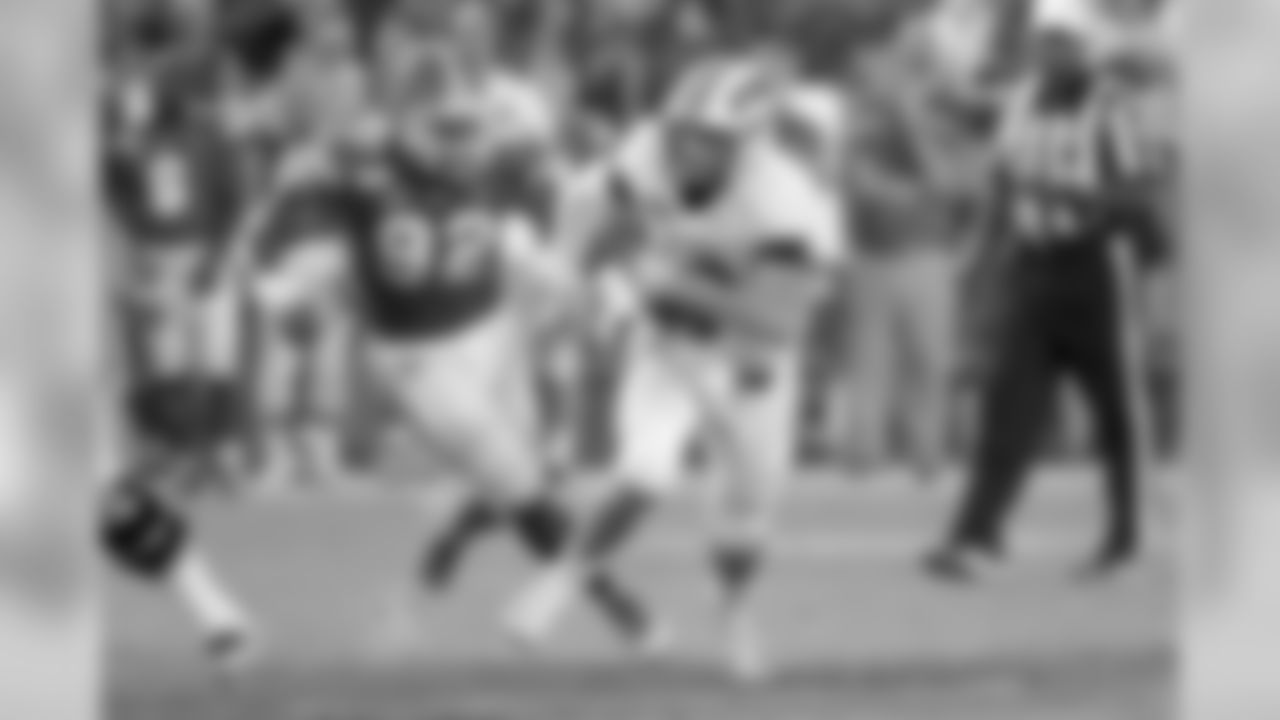
EDGE | Jabari Zuniga | Florida
Zuniga has all the tools teams look for in impact pass rushers, and could make sense for Buffalo at the right spot in the draft.
UT Martin quarterback John Bachus III scramble past Florida defensive lineman Jabari Zuniga (92) during the first half of an NCAA college football game, Saturday, Sept. 7, 2019, in Gainesville, Fla. (AP Photo/John Raoux)
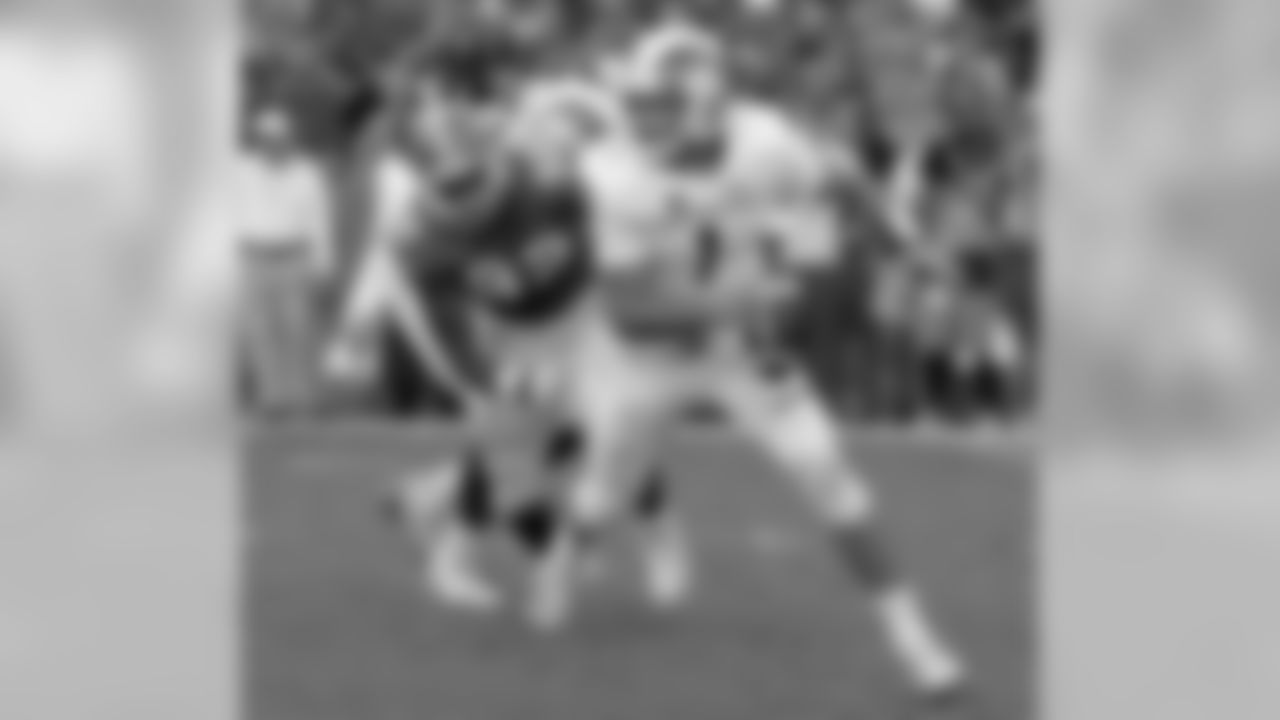
EDGE | Jabari Zuniga | Florida
Zuniga has all the tools teams look for in impact pass rushers, and could make sense for Buffalo at the right spot in the draft.
Colorado State quarterback K.J. Carta-Samuels (1) scrambles as he is chased by Florida defensive lineman Jabari Zuniga (92) during the second half of an NCAA college football game, Saturday, Sept. 15, 2018, in Gainesville, Fla. (AP Photo/John Raoux)
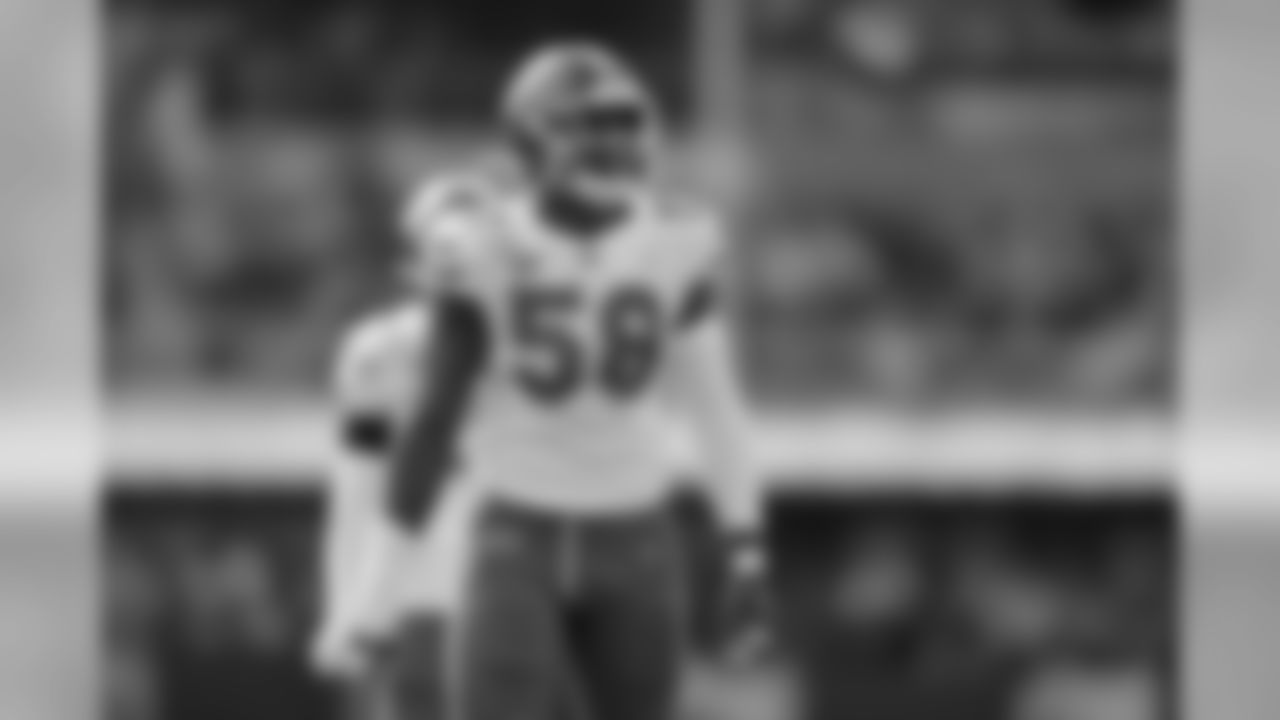
EDGE | Jonathan Greenard | Florida
A super rangy edge rusher, Greenard could help make up for some of the lost pass rush production from last season.
Florida linebacker Jonathan Greenard takes up his position during the first half of an NCAA college football game against Missouri Saturday, Nov. 16, 2019, in Columbia, Mo. (AP Photo/Jeff Roberson)
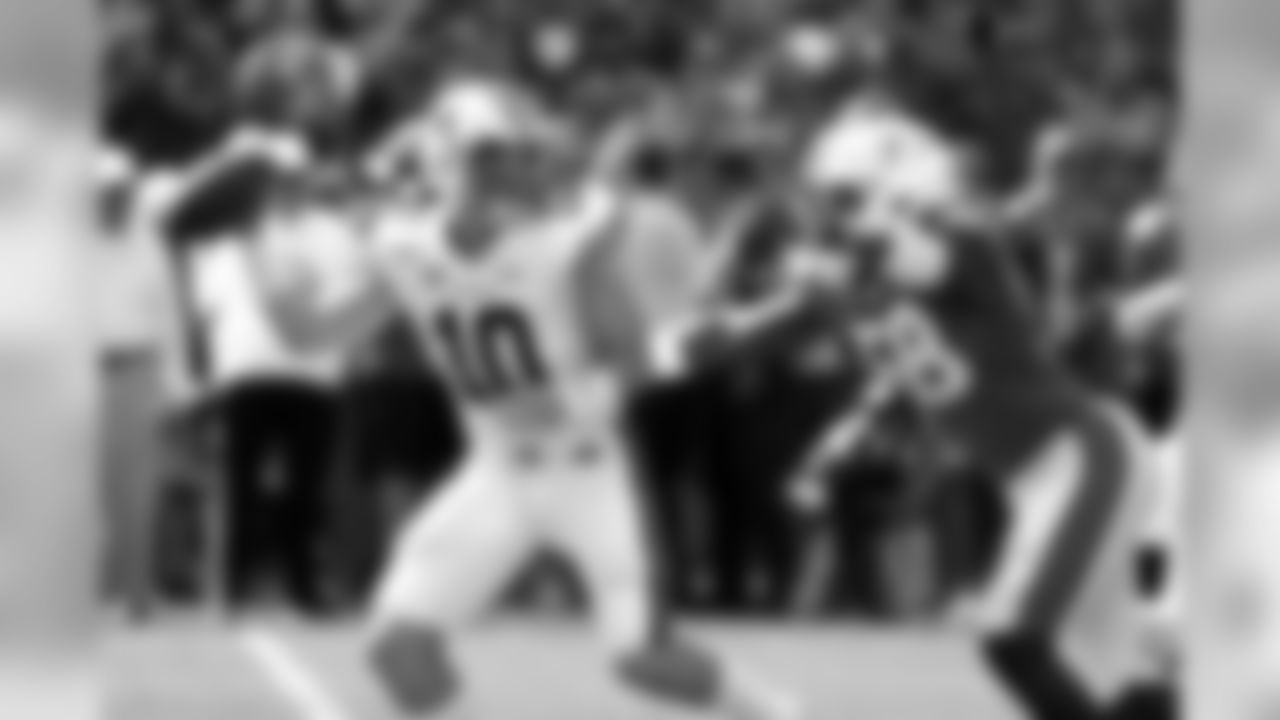
EDGE | Jonathan Greenard | Florida
A super rangy edge rusher, Greenard could help make up for some of the lost pass rush production from last season.
Auburn quarterback Bo Nix, left, is hit by Florida linebacker Jonathan Greenard (58) as he releases the ball during the first half of an NCAA college football game, Saturday, Oct. 5, 2019, in Gainesville, Fla. (AP Photo/John Raoux)

EDGE | Jonathan Greenard | Florida
A super rangy edge rusher, Greenard could help make up for some of the lost pass rush production from last season.
Florida linebacker Jonathan Greenard (58) looks over his shoulder as he runs an 80-yard touchdown after recovering a Vanderbilt fumble during the second half of an NCAA college football game, Saturday, Nov. 9, 2019, in Gainesville, Fla. (AP Photo/John Raoux)
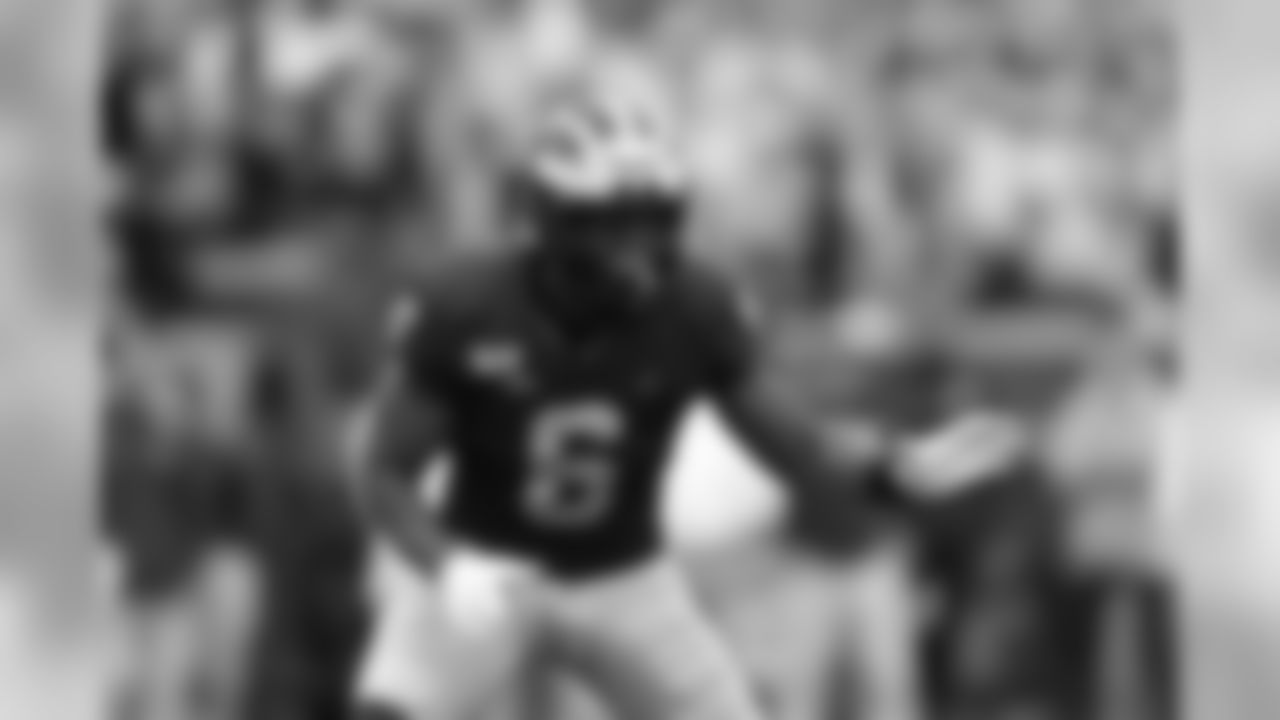
EDGE | Josh Uche | Michigan
Uche was used in a variety of ways at Michigan, and could play a Lorenzo Alexander-type role if called upon.
Michigan linebacker Josh Uche plays against Rutgers in the first half of an NCAA college football game in Ann Arbor, Mich., Saturday, Sept. 28, 2019. (AP Photo/Paul Sancya)
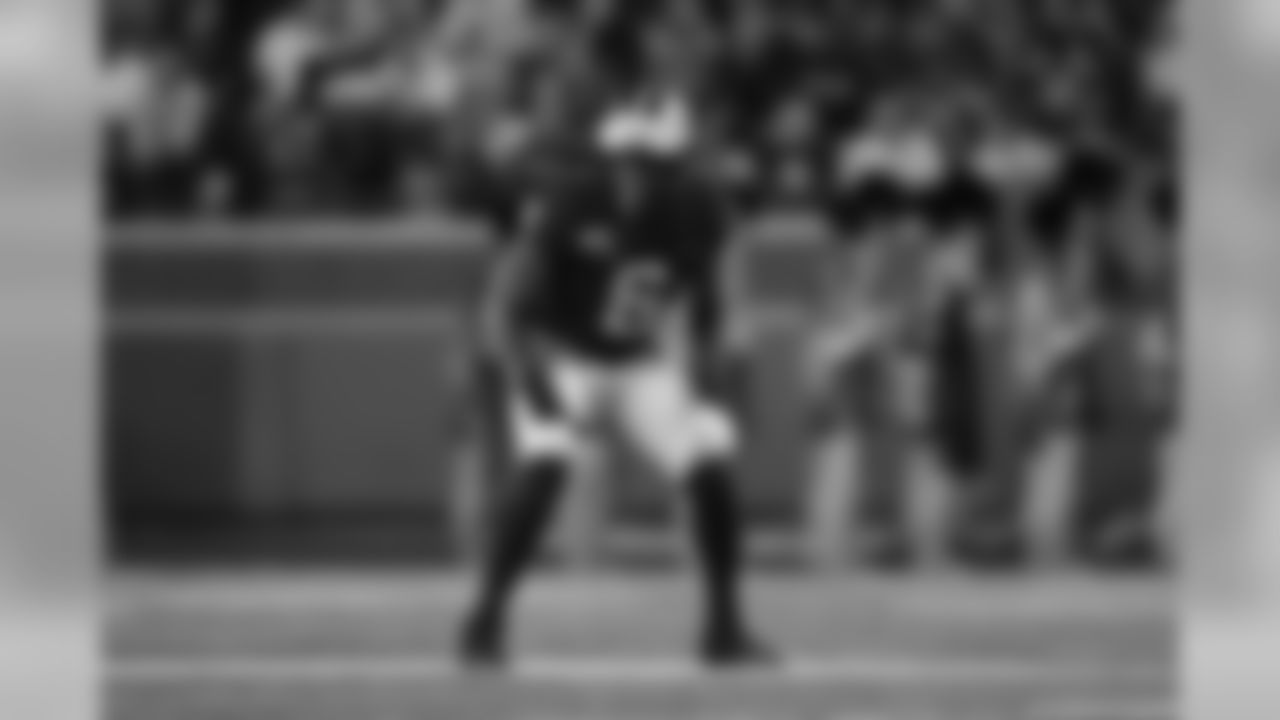
EDGE | Josh Uche | Michigan
Uche was used in a variety of ways at Michigan, and could play a Lorenzo Alexander-type role if called upon.
Michigan linebacker Josh Uche plays against Middle Tennessee in the second half of an NCAA college football game in Ann Arbor, Mich., Saturday, Aug. 31, 2019. (AP Photo/Paul Sancya)
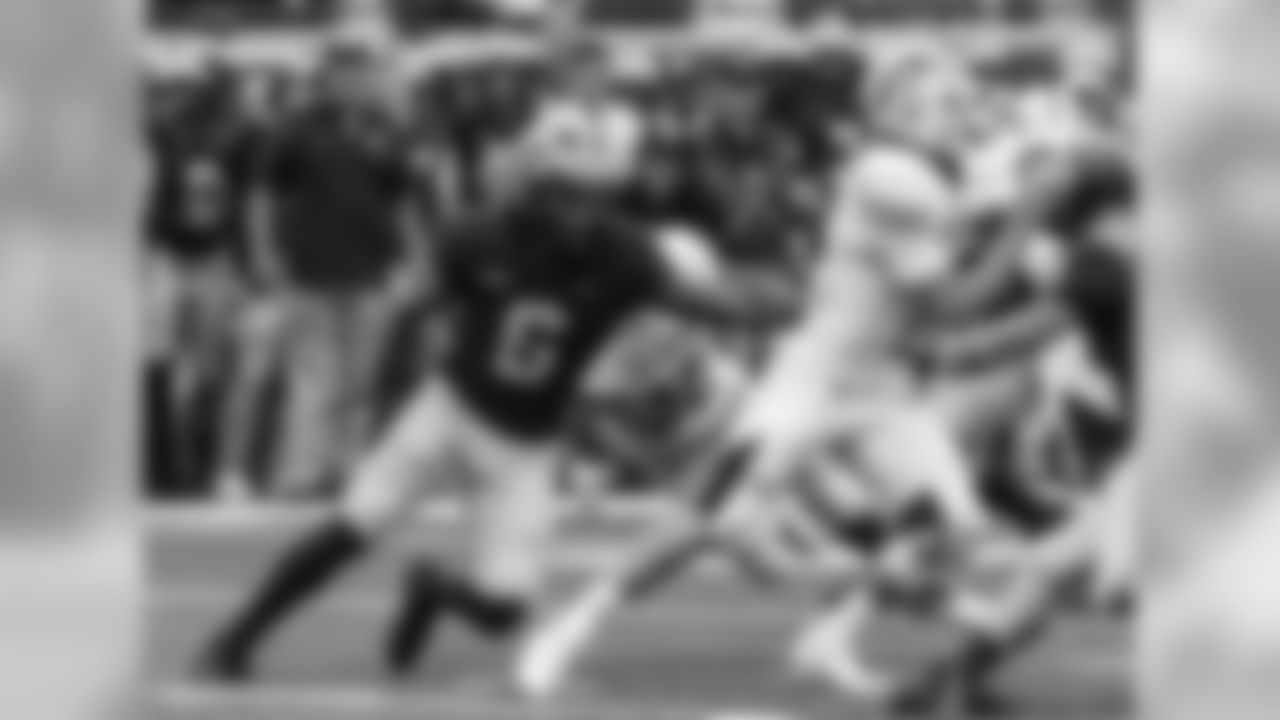
EDGE | Josh Uche | Michigan
Uche was used in a variety of ways at Michigan, and could play a Lorenzo Alexander-type role if called upon.
Michigan linebacker Josh Uche (6) pressures Western Michigan quarterback Jon Wassink (16) in the second quarter of an NCAA college football game in Ann Arbor, Mich., Saturday, Sept. 8, 2018. (AP Photo/Tony Ding)

SAFETY | Kyle Dugger | Lenoir Rhyne
Dugger could be a versatile piece in Sean McDermott's defense, and could even play as a "big nickel" if needed.
South safety Kyle Dugger of Lenoir Rhyne (23) participates in drills as the South squad practices for the Senior Bowl Thursday, Jan. 23, 2020, in Mobile, Ala. (AP Photo/Butch Dill)
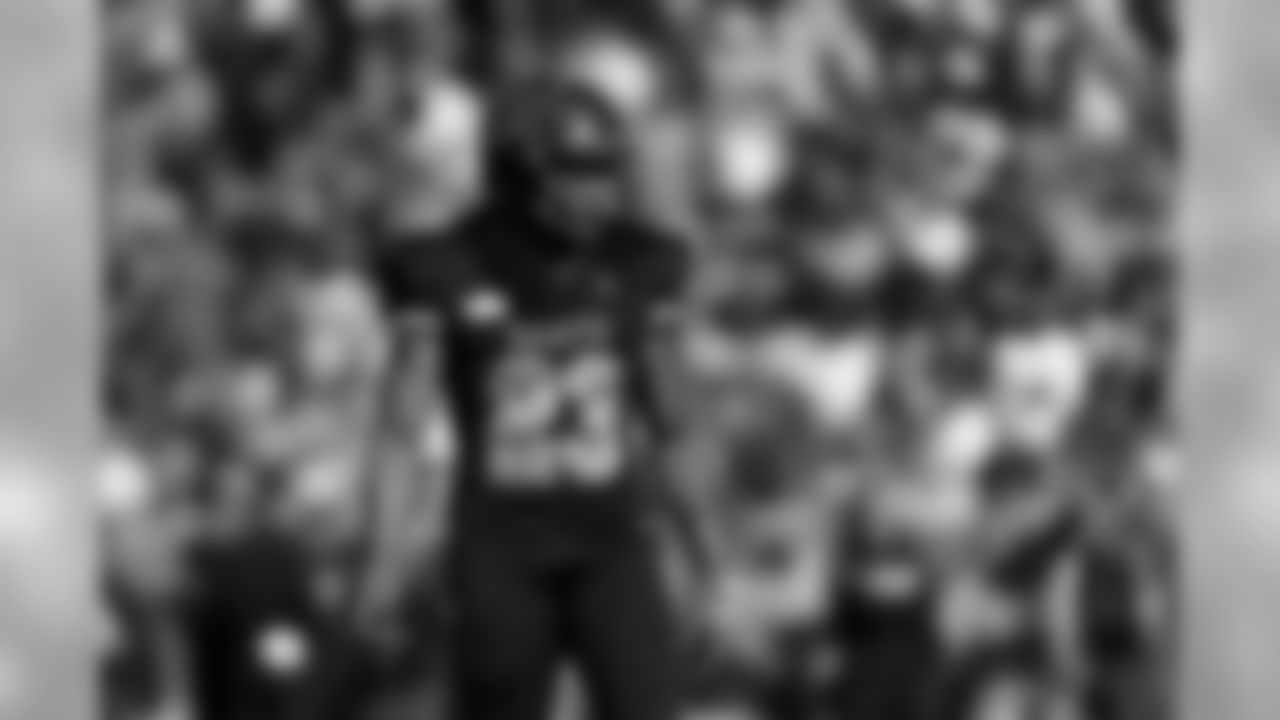
SAFETY | Kyle Dugger | Lenoir Rhyne
Dugger could be a versatile piece in Sean McDermott's defense, and could even play as a "big nickel" if needed.
South safety Kyle Dugger of Lenoir Rhyne (23) during the first half of the Senior Bowl college football game Saturday, Jan. 25, 2020, in Mobile, Ala. (AP Photo/Butch Dill)
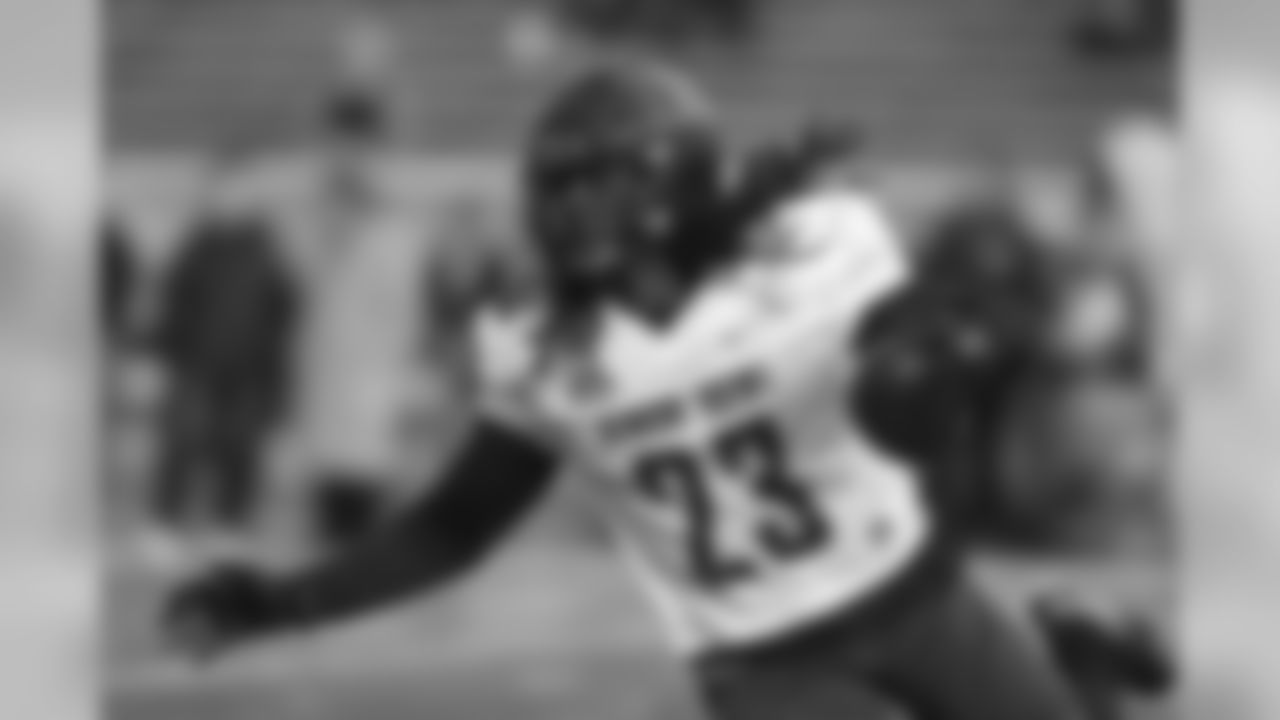
SAFETY | Kyle Dugger | Lenoir Rhyne
Dugger could be a versatile piece in Sean McDermott's defense, and could even play as a "big nickel" if needed.
Lenoir Rhyne defensive back Kyle Dugger works out for scouts as the South squad runs drills during practice for the Senior Bowl Wednesday, Jan. 22, 2020, in Mobile, Ala. (AP Photo/Butch Dill)
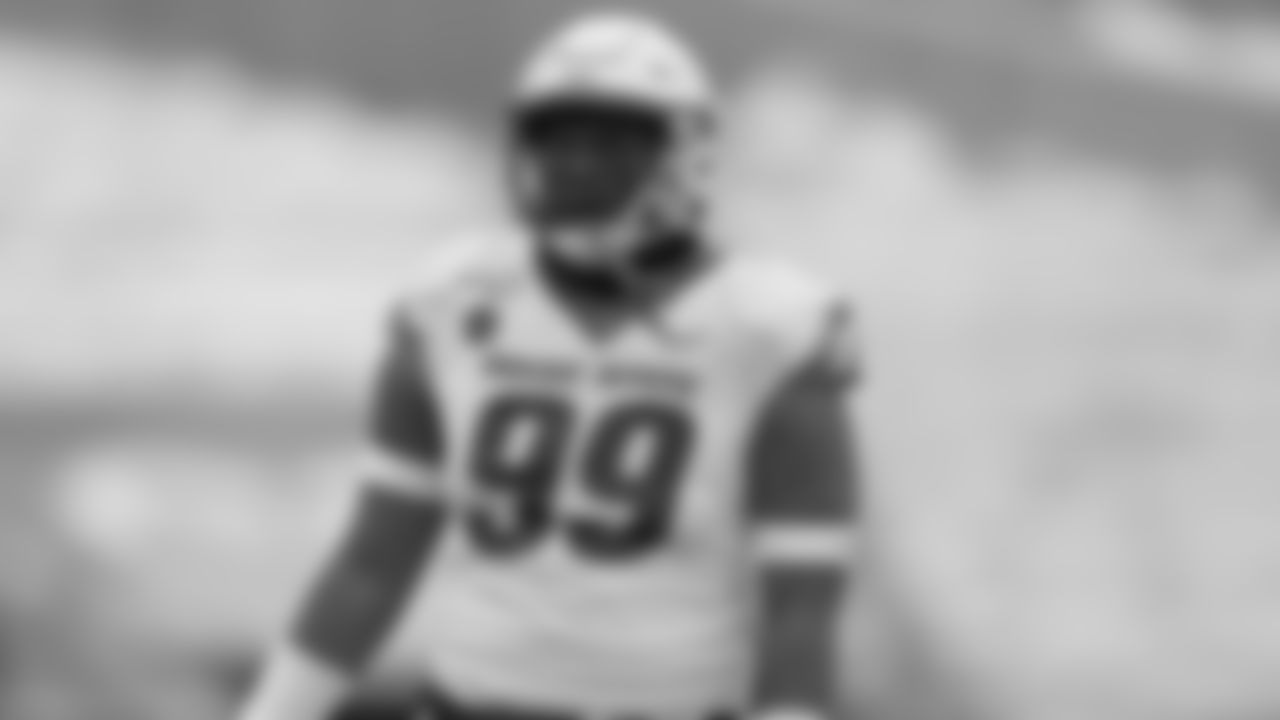
EDGE | Curtis Weaver | Boise State
Weaver is another versatile defensive lineman that could even slide inside at times to rush the passer. He might make sense for a DL that likes to rotate players a good amount.
Boise State linebacker Curtis Weaver (99) in the first half of an NCAA college football game Friday, Nov. 29, 2019, in Fort Collins, Colo. (AP Photo/David Zalubowski)
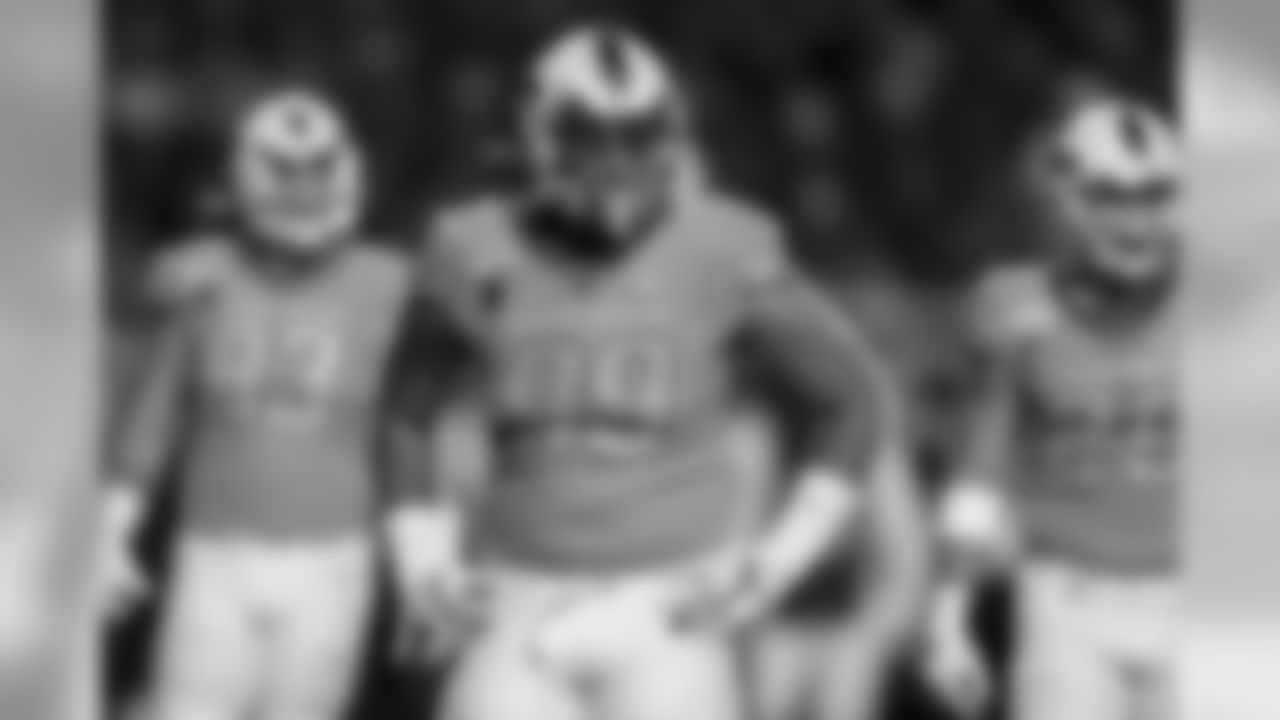
EDGE | Curtis Weaver | Boise State
Weaver is another versatile defensive lineman that could even slide inside at times to rush the passer. He might make sense for a DL that likes to rotate players a good amount.
Boise State linebacker Curtis Weaver (99) looks to the sidelines during in the first half of an NCAA college football game against Hawaii, Saturday, Oct. 12, 2019, in Boise, Idaho. Boise State won 59-37. (AP Photo/Steve Conner)
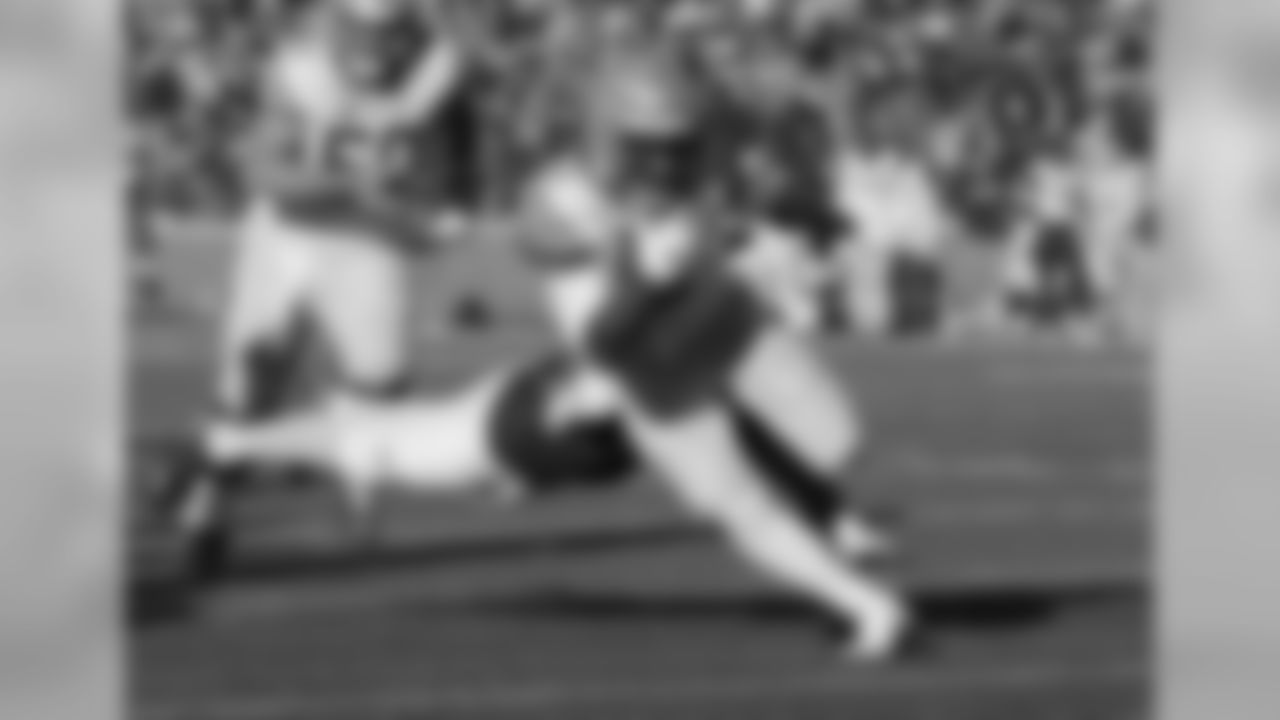
RB | Cam Akers | Florida State
Akers was a very productive back in college and is a capable pass catcher out of the backfield. He could be a solid contributor as a rookie.
Florida State running back Cam Akers runs for a touchdown in the second half of an NCAA college football game against Boston College, Saturday, Nov. 9, 2019, in Boston. (AP Photo/Bill Sikes)
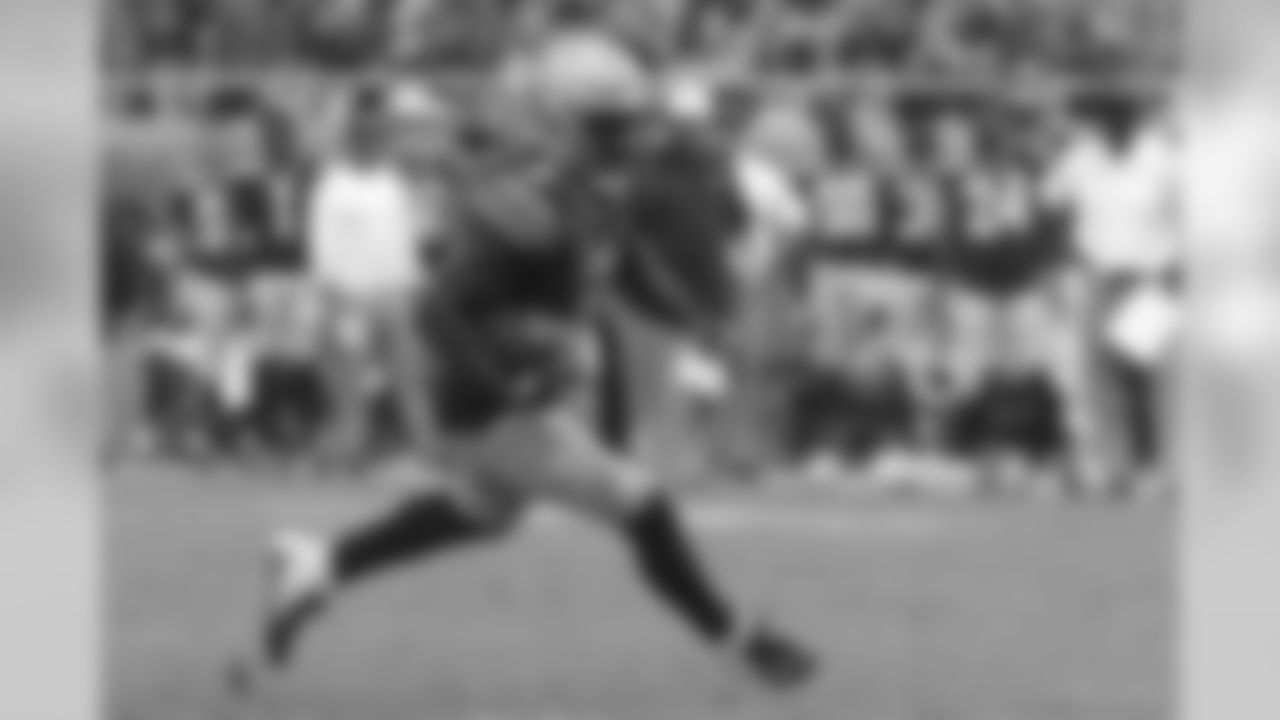
RB | Cam Akers | Florida State
Akers was a very productive back in college and is a capable pass catcher out of the backfield. He could be a solid contributor as a rookie.
Florida State's Cam Akers runs in the open field during an NCAA college football game with Syracuse, Saturday, Oct. 26, 2019 in Tallahassee Fla. Florida State won 35-17. (AP Photo/Steve Cannon)
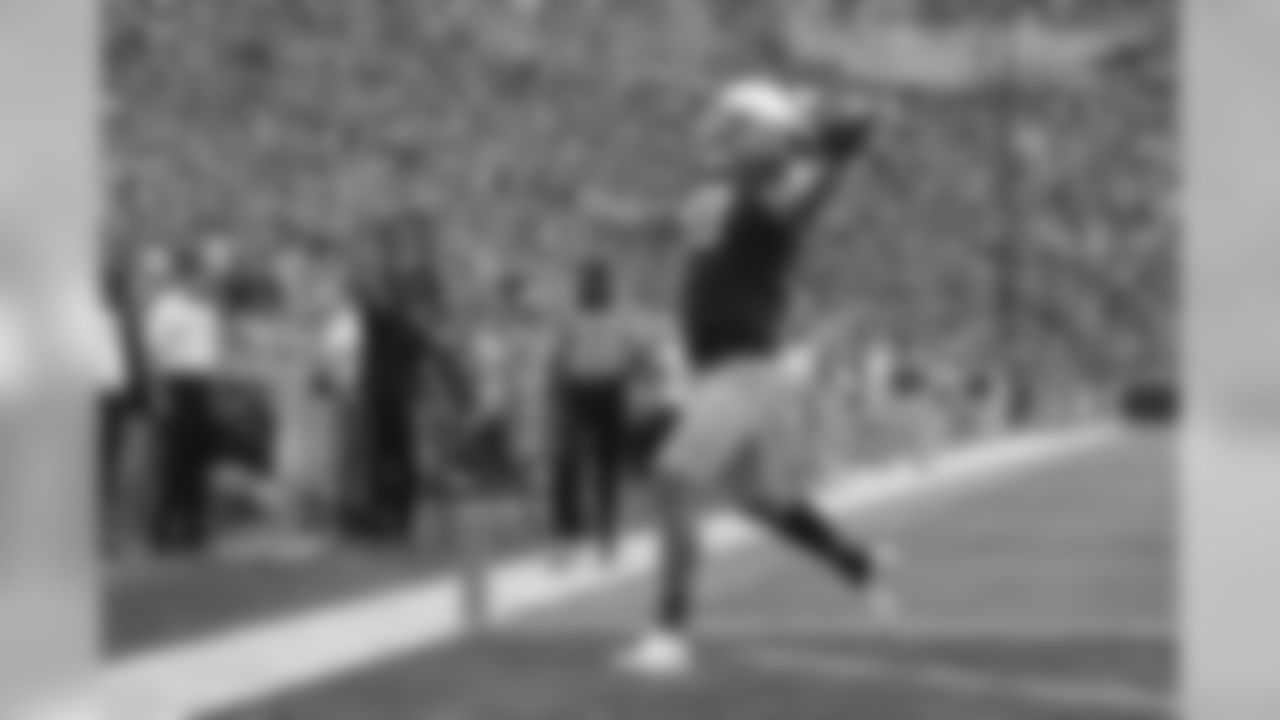
WR | Chase Claypool | Notre Dame
With a great frame and leaping ability, Claypool could team up with Josh Allen to make for a lethal redzone combination.
Notre Dame wide receiver Chase Claypool (83) reacts after a touchdown during the first half of an NCAA college football game against Bowling Green, Saturday, Oct. 5, 2019, in South Bend, Ind. (AP Photo/Darron Cummings)
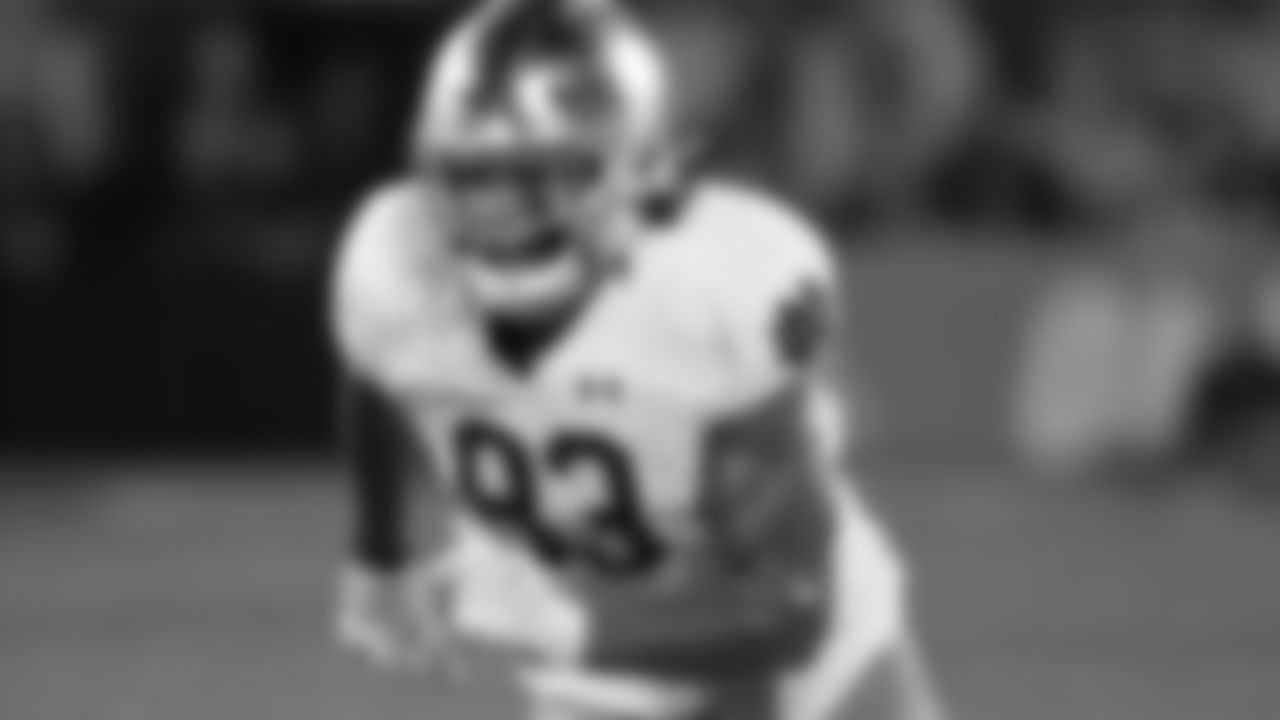
WR | Chase Claypool | Notre Dame
With a great frame and leaping ability, Claypool could team up with Josh Allen to make for a lethal redzone combination.
Notre Dame wide receiver Chase Claypool during an NCAA football game on Monday, Sept. 2 , 2019 in Louisville , Ky . (AP Photo/Tony Tribble)
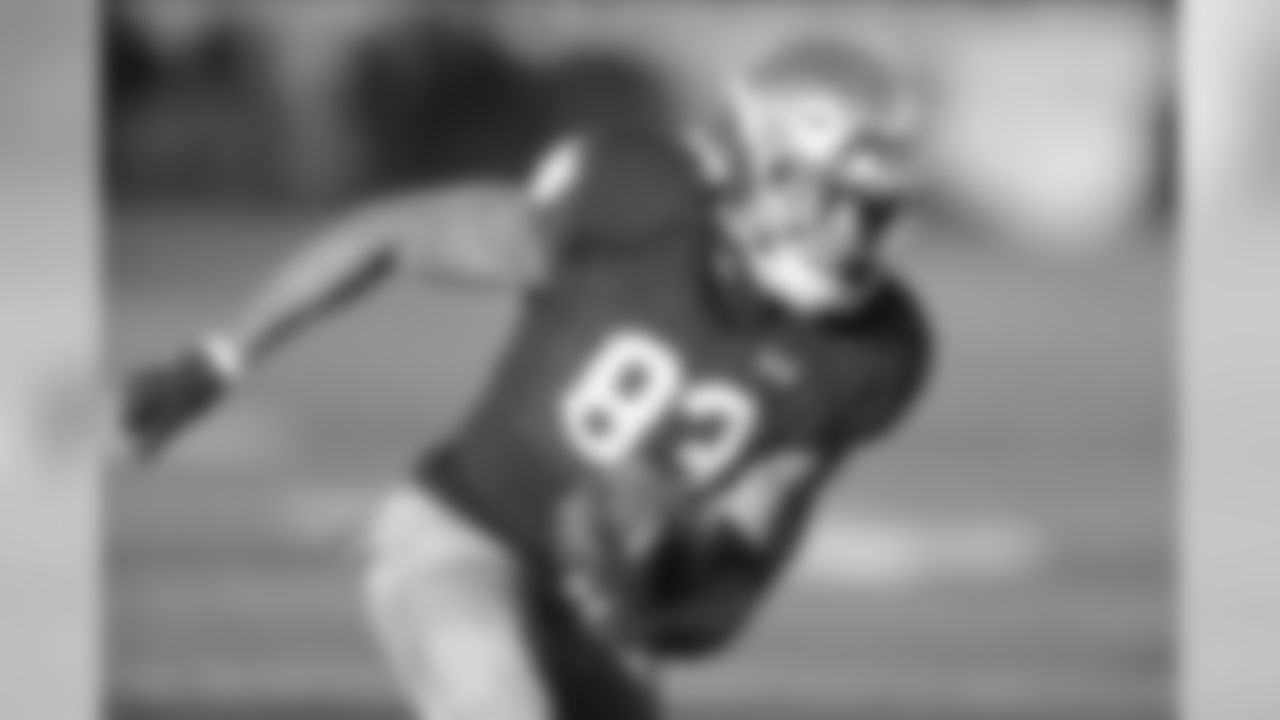
WR | Chase Claypool | Notre Dame
With a great frame and leaping ability, Claypool could team up with Josh Allen to make for a lethal redzone combination.
Notre Dame wide receiver Chase Claypool (83) runs during the first half of an NCAA college football game against Navy, Saturday, Nov. 16, 2019, in South Bend, Ind.(AP Photo/Darron Cummings)

RB | Jonathan Taylor | Wisconsin
One of the best running backs to ever play college football, Taylor is arguably one of the most "pro-ready" prospects in the draft. He had over 6,000 yards rushing in three seasons.
FILE - In this Dec. 7, 2019, file photo, Wisconsin running back Jonathan Taylor (23) runs for a touchdown past Ohio State cornerback Shaun Wade (24) during the first half of the Big Ten championship NCAA college football game, in Indianapolis. Taylor was selected to The Associated Press All-Big Ten Conference team, Wednesday, Dec. 11, 2019. (AP Photo/Michael Conroy, File)
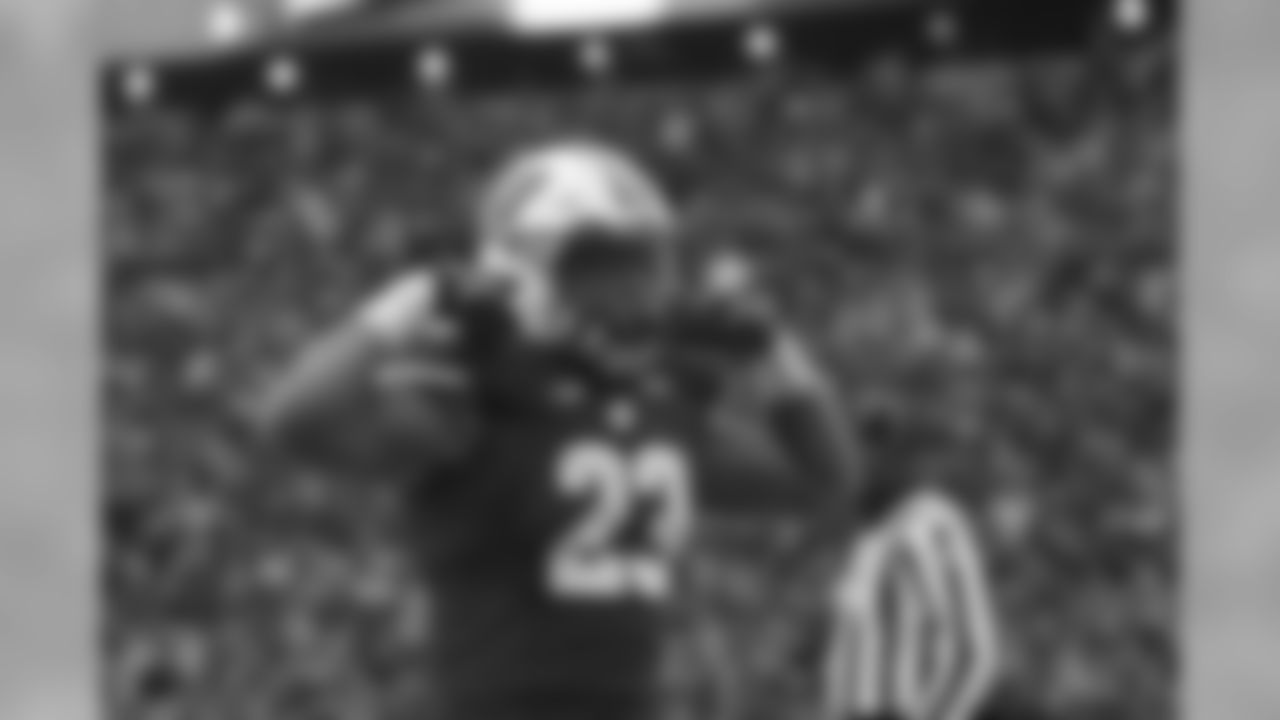
RB | Jonathan Taylor | Wisconsin
One of the best running backs to ever play college football, Taylor is arguably one of the most "pro-ready" prospects in the draft. He had over 6,000 yards rushing in three seasons.
Wisconsin running back Jonathan Taylor celebrates a touchdown against Michigan State during the second half of an NCAA college football game Saturday, Oct. 12, 2019, in Madison, Wis. Wisconsin won 38-0. (AP Photo/Andy Manis)
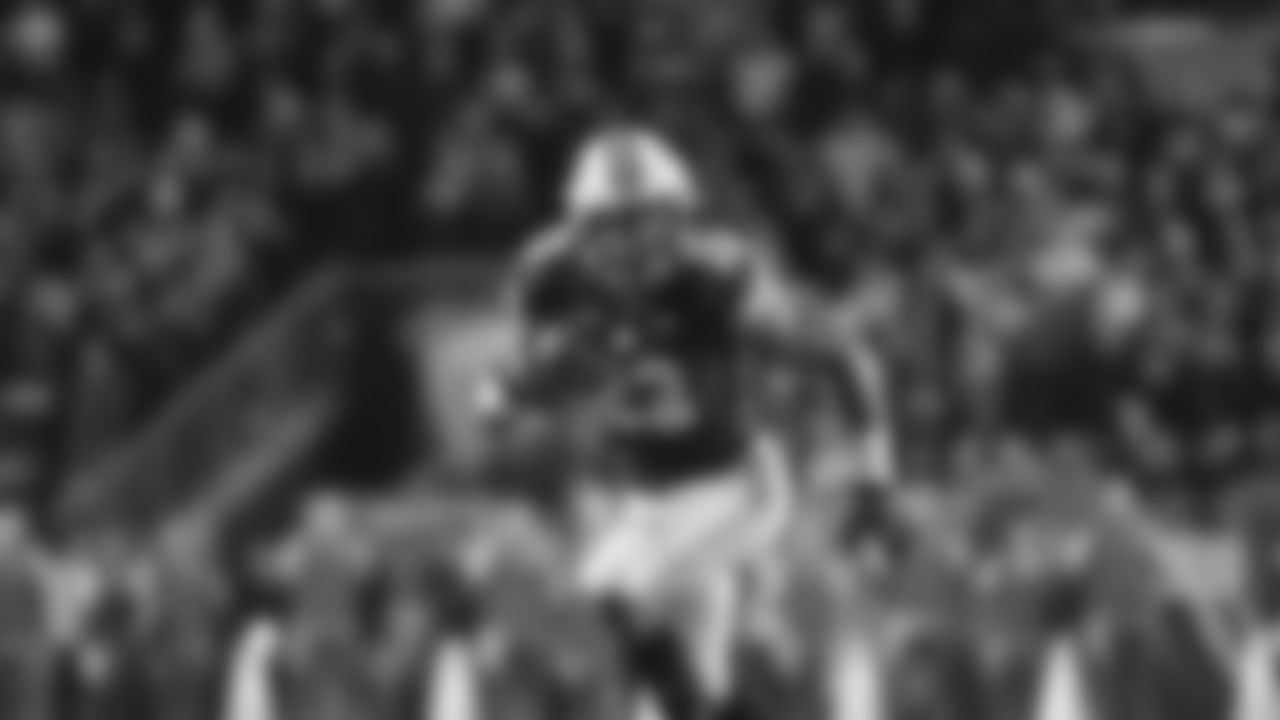
RB | Jonathan Taylor | Wisconsin
One of the best running backs to ever play college football, Taylor is arguably one of the most "pro-ready" prospects in the draft. He had over 6,000 yards rushing in three seasons.
Wisconsin's Jonathan Taylor runs during the second half of an NCAA college football game against Purdue Saturday, Nov. 23, 2019, in Madison, Wis. (AP Photo/Morry Gash)
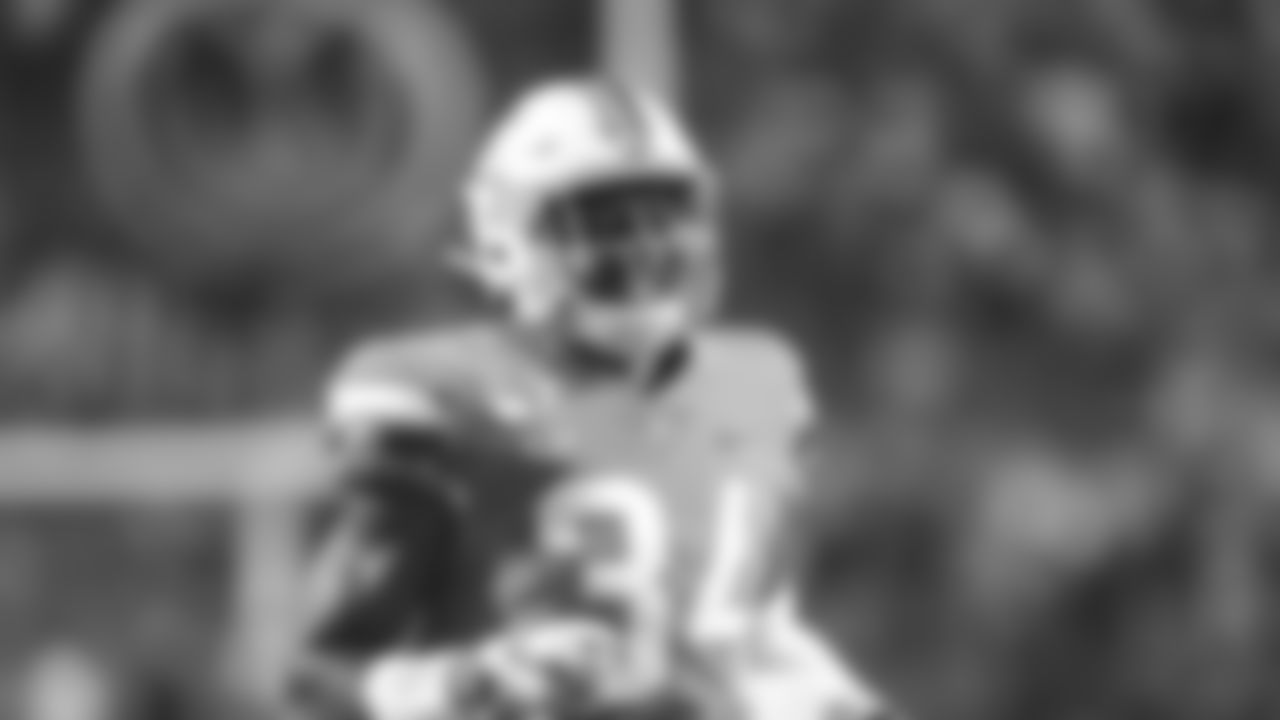
CB | Bryce Hall | Virginia
He was one of the best corners in college football, and could be a nice prospect for the Bills to groom behind their current group of defensive backs.
Virginia cornerback Bryce Hall (34) during an NCAA college football game in Charlottesville, Va., Friday, Sept. 6, 2019. Virginia defeated William & Mary 51-17. (AP Photo/Andrew Shurtleff)
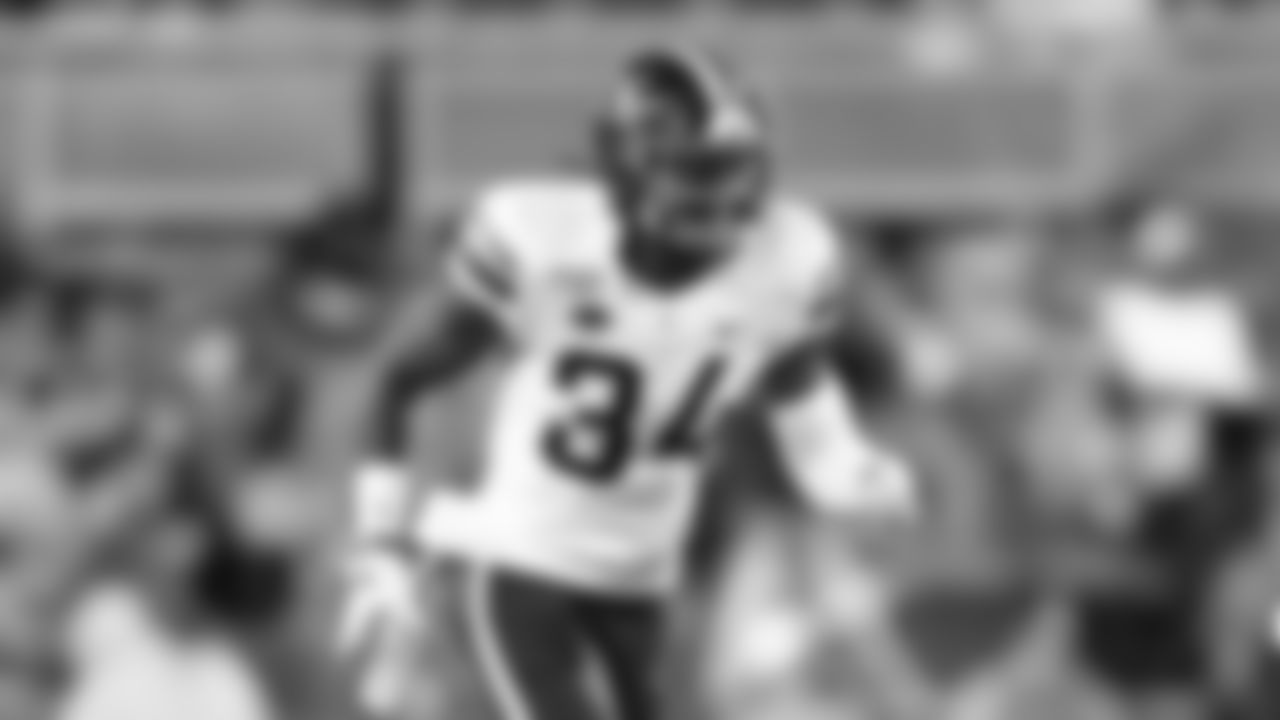
CB | Bryce Hall | Virginia
He was one of the best corners in college football, and could be a nice prospect for the Bills to groom behind their current group of defensive backs.
Bryce Hall #34 of the Virginia Cavaliers in action against the Pittsburgh Panthers during an NCAA football game on Saturday, Aug. 31, 2019 in Pittsburgh. (AP Photo/Jared Wickerham)
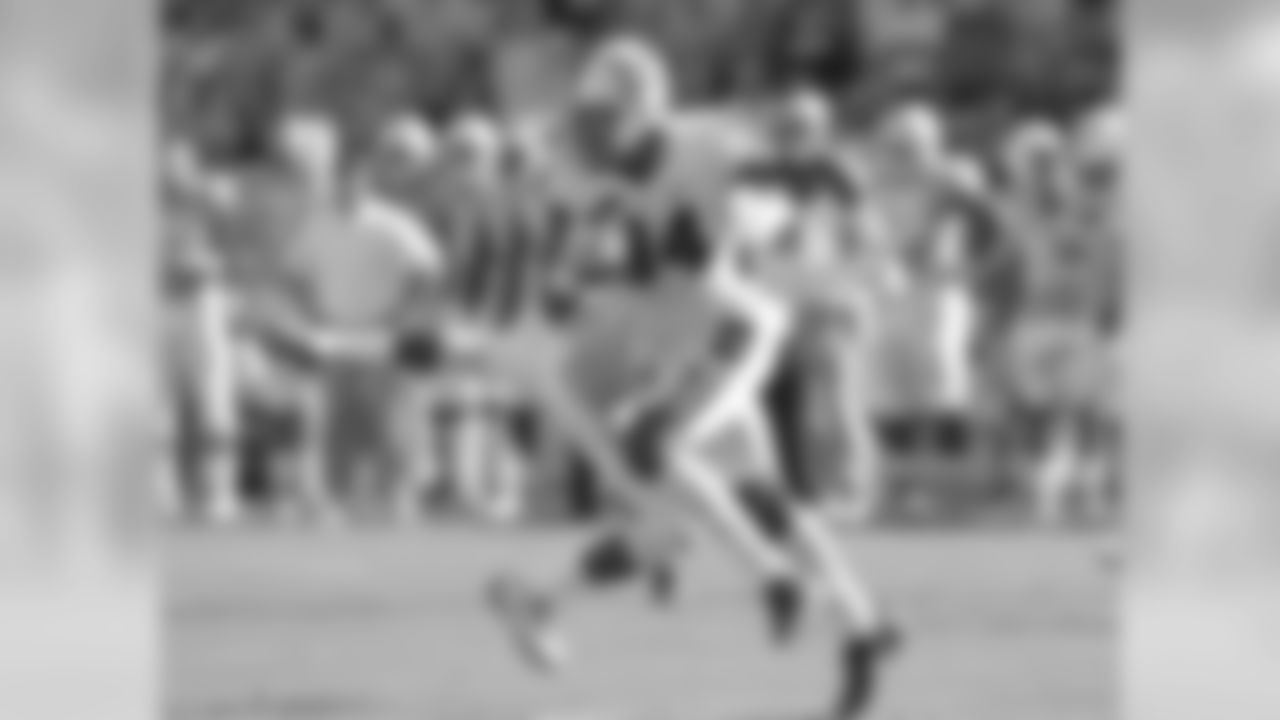
CB | Bryce Hall | Virginia
He was one of the best corners in college football, and could be a nice prospect for the Bills to groom behind their current group of defensive backs.
Virginia's Bryce Hall (34) runs the ball following an interception as North Carolina's Jordan Cunningham tries to make the tackle during the first half an NCAA college football game in Chapel Hill, N.C., Saturday, Oct. 14, 2017. (AP Photo/Gerry Broome)
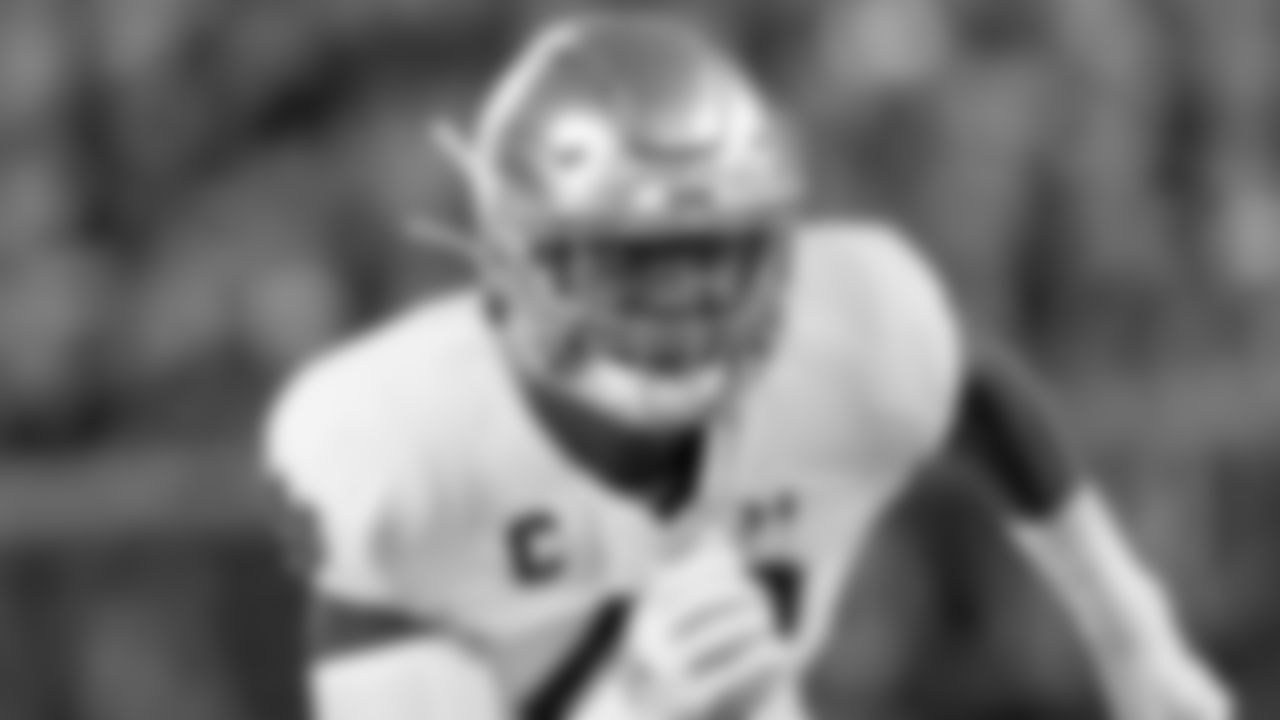
DE | Julian Okwara | Notre Dame
A balanced DE, Okwara could play a variety of roles on Buffalo's defense and bring need some more "nasty" up front.
Notre Dame defensive lineman Julian Okwara during an NCAA football game on Monday, Sept. 2 , 2019 in Louisville , Ky . (AP Photo/Tony Tribble)
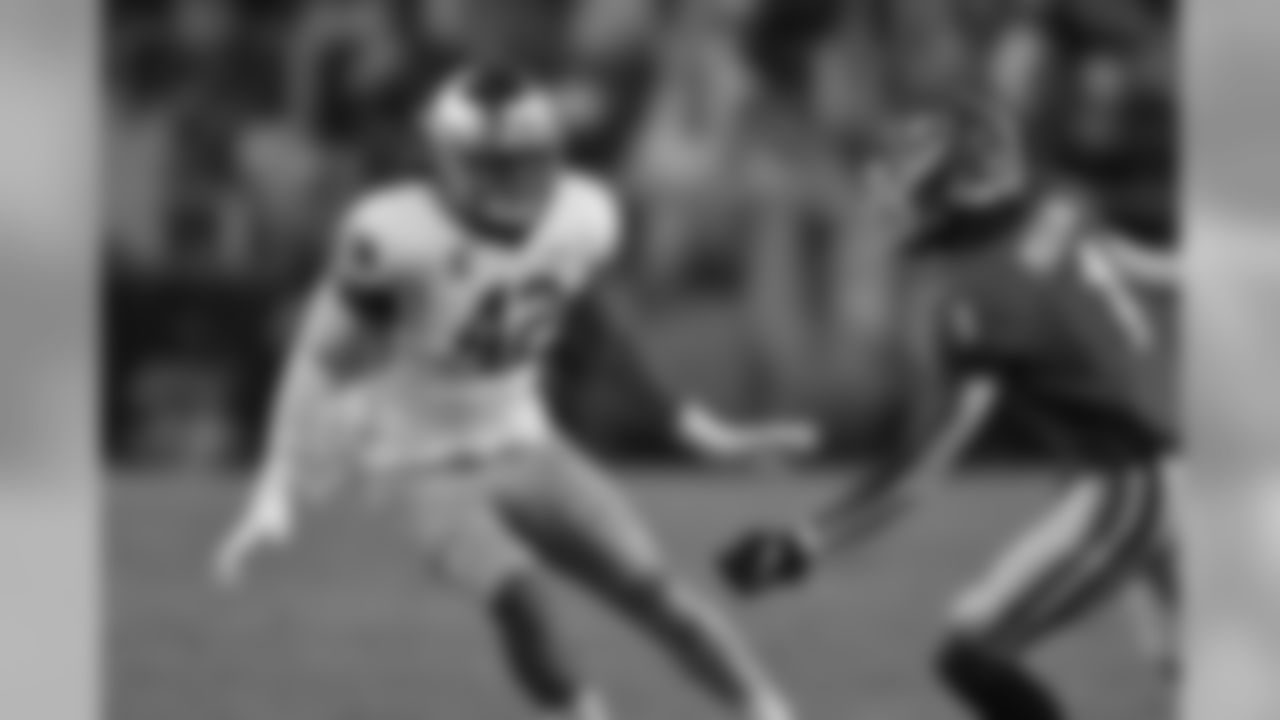
DE | Julian Okwara | Notre Dame
A balanced DE, Okwara could play a variety of roles on Buffalo's defense and bring need some more "nasty" up front.
Notre Dame defensive lineman Julian Okwara (42) works against Georgia during the second half of an NCAA college football game, Saturday, Sept. 21, 2019, in Athens, Ga. (AP Photo/Mike Stewart)
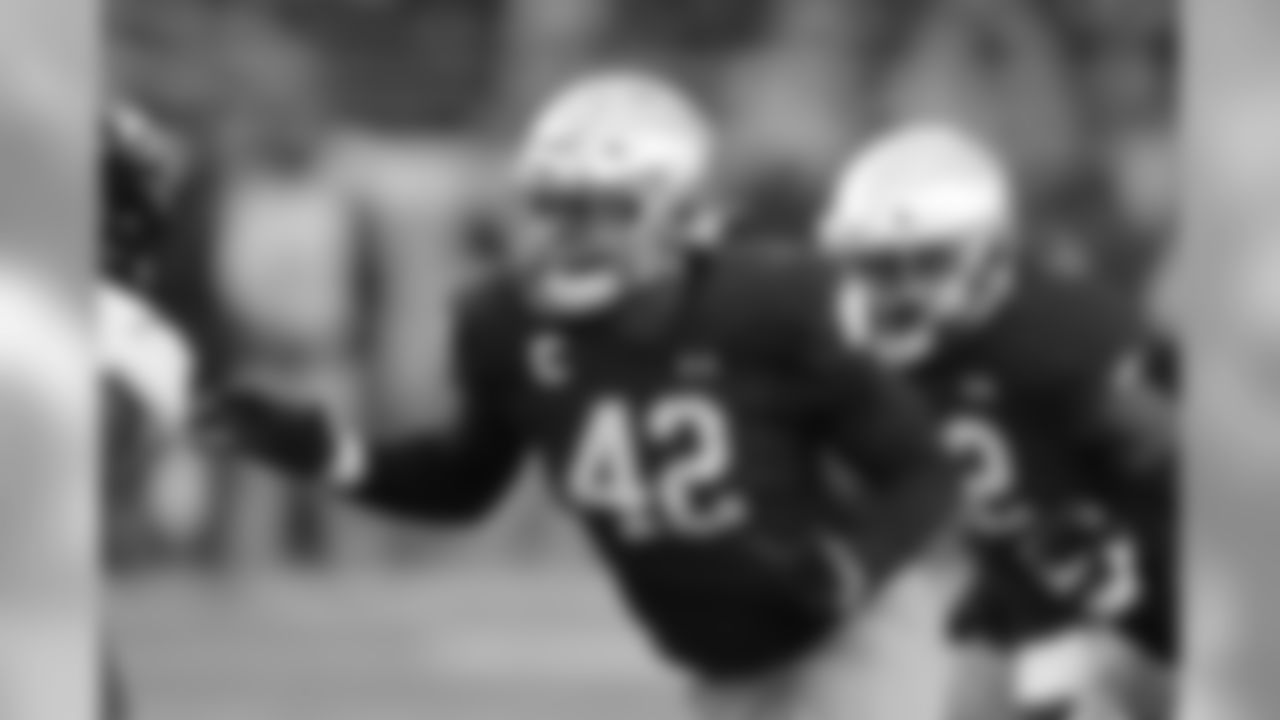
DE | Julian Okwara | Notre Dame
A balanced DE, Okwara could play a variety of roles on Buffalo's defense and bring need some more "nasty" up front.
Notre Dame defensive lineman Julian Okwara (42) in action during the second half of an NCAA college football game against Virginia Tech, Saturday, Nov. 2, 2019, in South Bend, Ind. (AP Photo/Carlos Osorio)
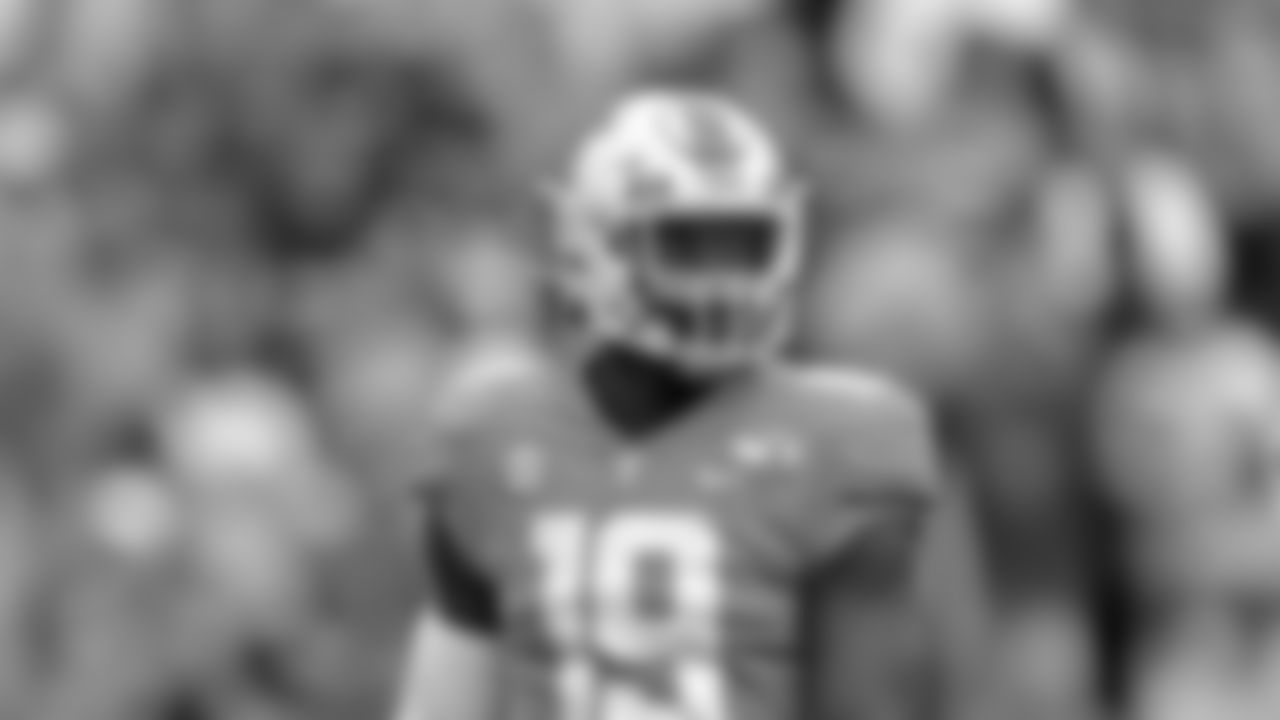
EDGE | Darrell Taylor | Tennessee
He was one of the most consistent pass rushers in college football, and his athletic traits are hard to ignore. Taylor be a great value pick for Buffalo on defense.
Tennessee linebacker Darrell Taylor (19) plays in the first half of an NCAA college football game against South Carolina, Saturday, Oct. 26, 2019, in Knoxville, Tenn. (AP Photo/Wade Payne)
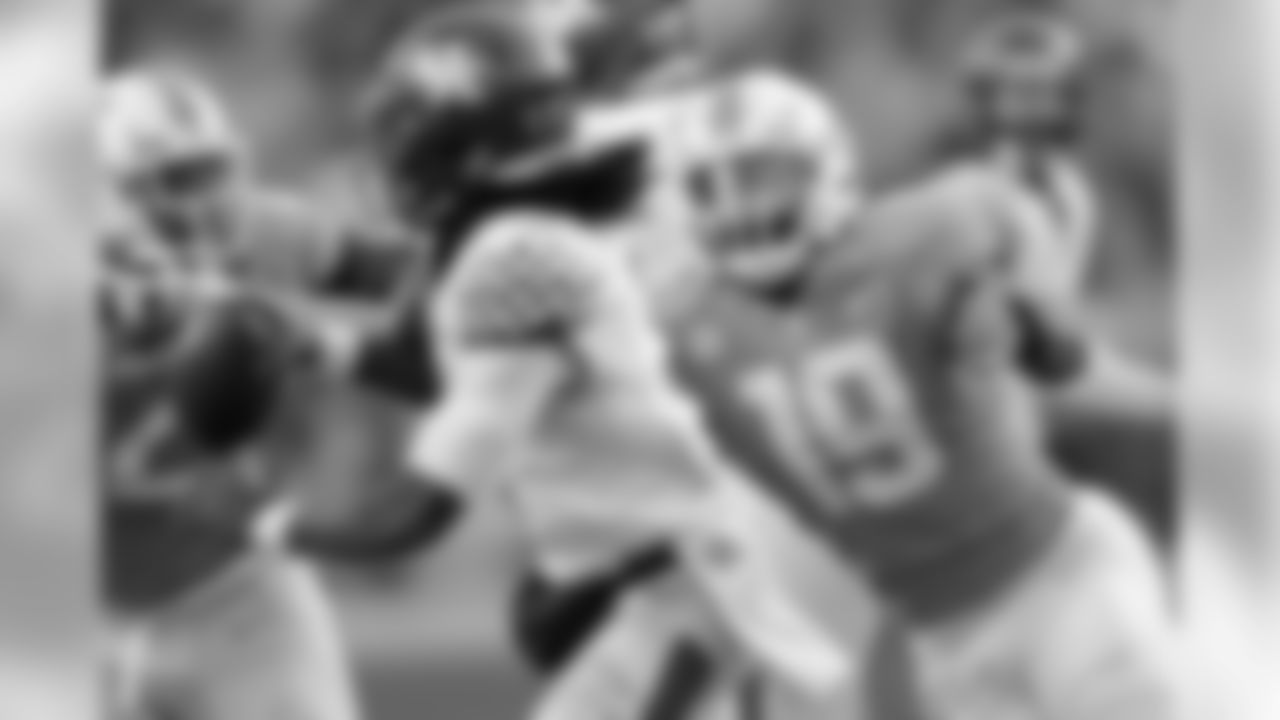
EDGE | Darrell Taylor | Tennessee
He was one of the most consistent pass rushers in college football, and his athletic traits are hard to ignore. Taylor be a great value pick for Buffalo on defense.
FILE - In this Nov. 10, 2018, file photo, Kentucky quarterback Terry Wilson (3) is pressured by Tennessee linebacker Darrell Taylor (19) in the first half of an NCAA college football game in Knoxville, Tenn. Darrell Taylor is coming off a breakthrough season but believes he’s capable of doing even better. Taylor recorded eight sacks last year, the most of any Southeastern Conference player who’s back this fall. (AP Photo/Wade Payne, File)
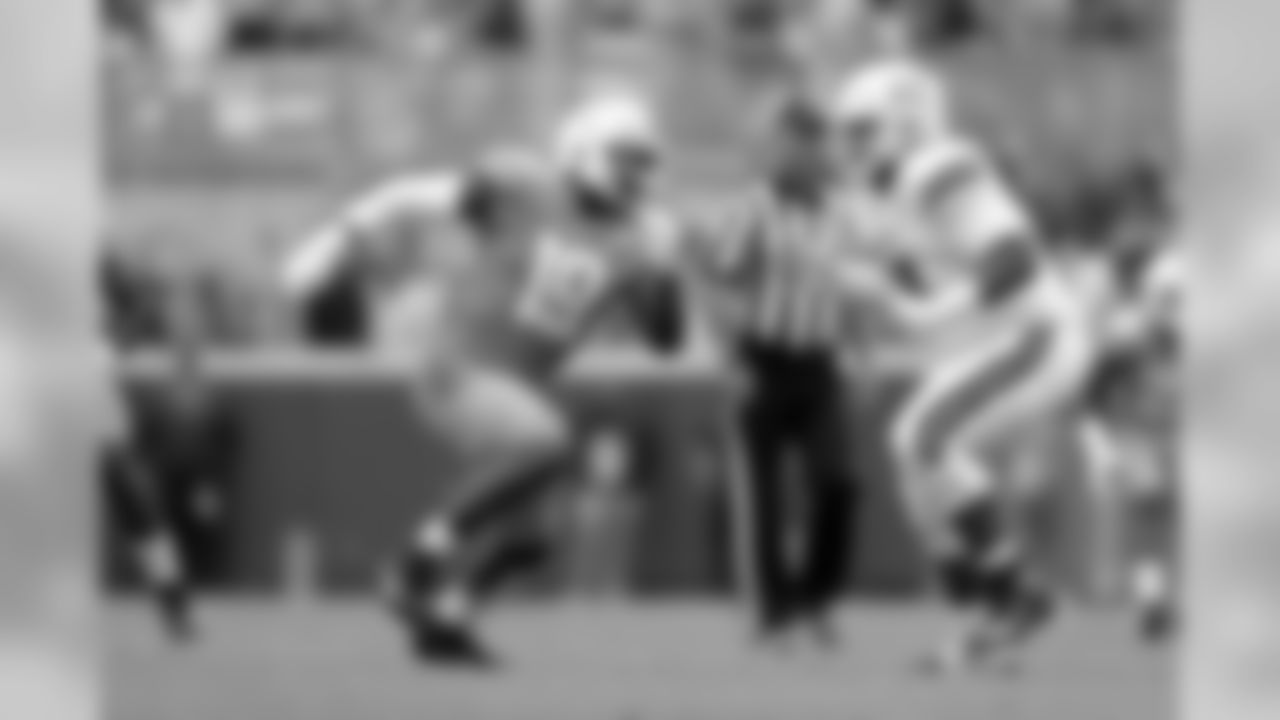
EDGE | Darrell Taylor | Tennessee
He was one of the most consistent pass rushers in college football, and his athletic traits are hard to ignore. Taylor be a great value pick for Buffalo on defense.
Tennessee linebacker Darrell Taylor (19) plays against Mississippi State in the second half of an NCAA college football game Saturday, Oct. 12, 2019, in Knoxville, Tenn. (AP Photo/Wade Payne)
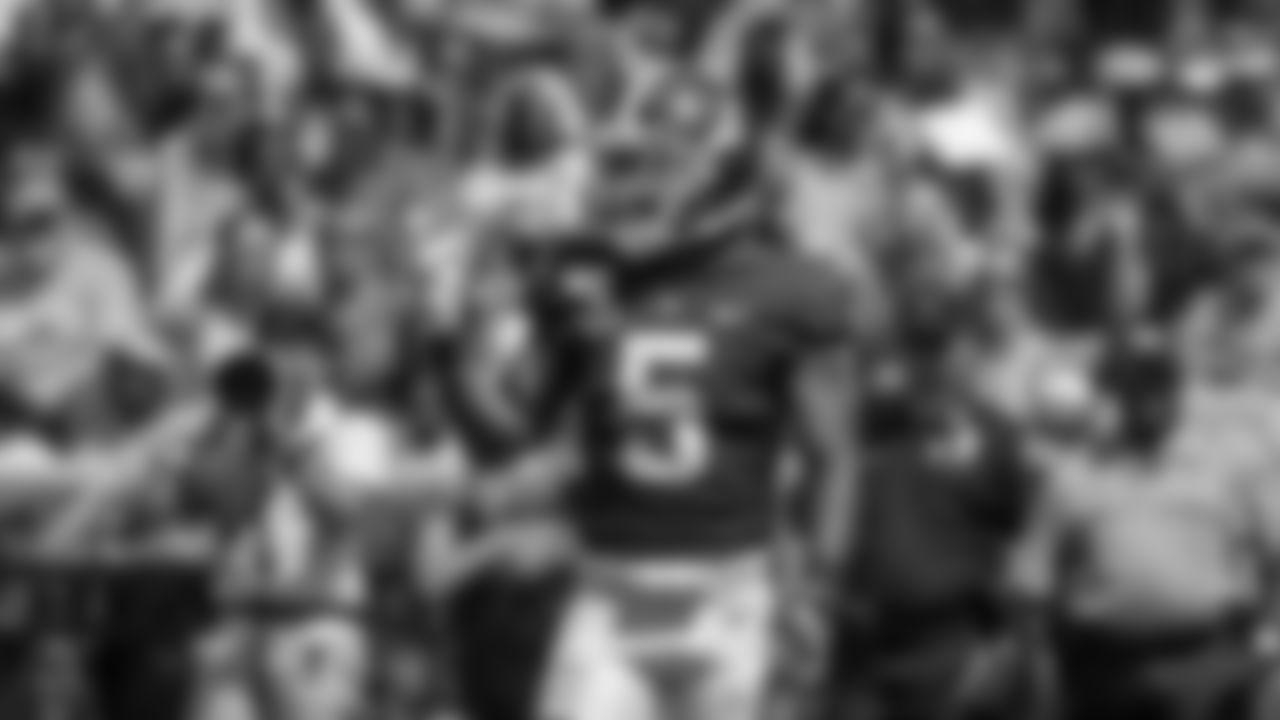
CB | Shyheim Carter | Alabama
Carter can cover a ton of ground and make plays on the ball, which is exactly what Sean McDermott and Leslie Frazier are looking for in Buffalo's defense.
Alabama defensive back Shyheim Carter (5) during the second half of an NCAA college football game against Southern Miss, Saturday, Sept. 21, 2019, in Tuscaloosa, Ala. (AP Photo/Vasha Hunt)
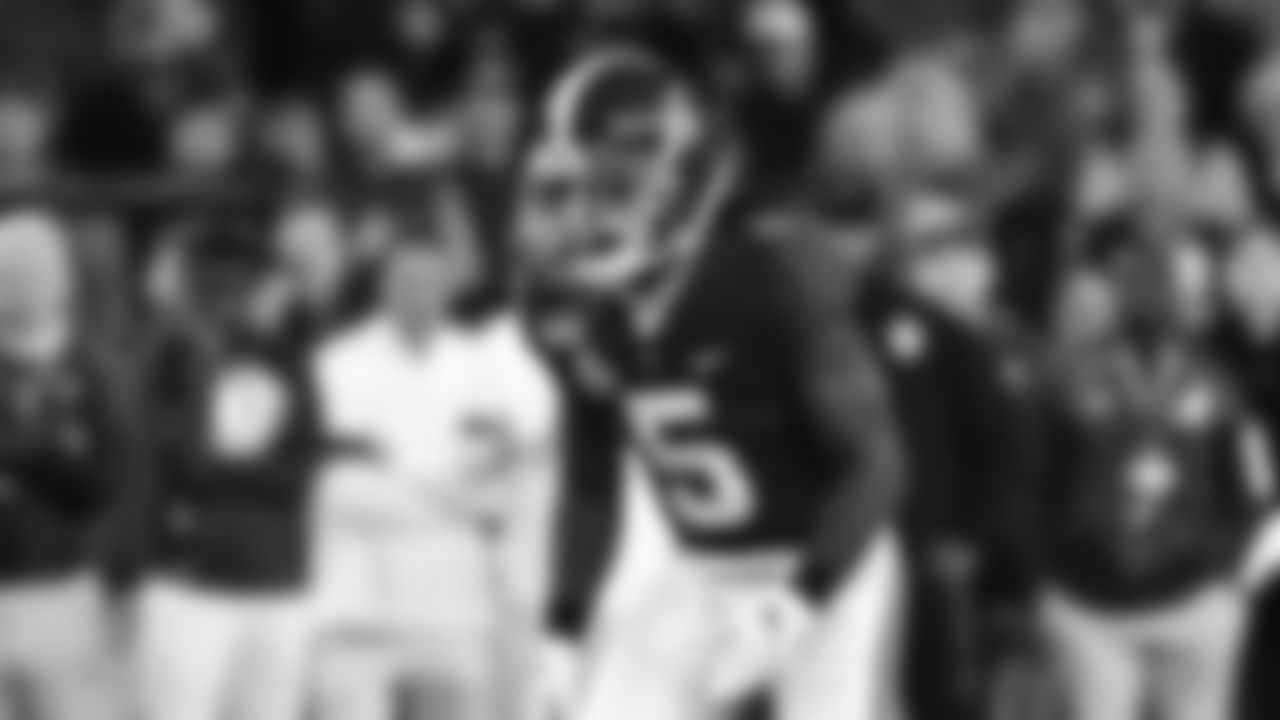
CB | Shyheim Carter | Alabama
Carter can cover a ton of ground and make plays on the ball, which is exactly what Sean McDermott and Leslie Frazier are looking for in Buffalo's defense.
Alabama defensive back Shyheim Carter in an NCAA football game Saturday, Nov. 9, 2019, in Tuscaloosa, Ala. (AP Photo/Vasha Hunt)
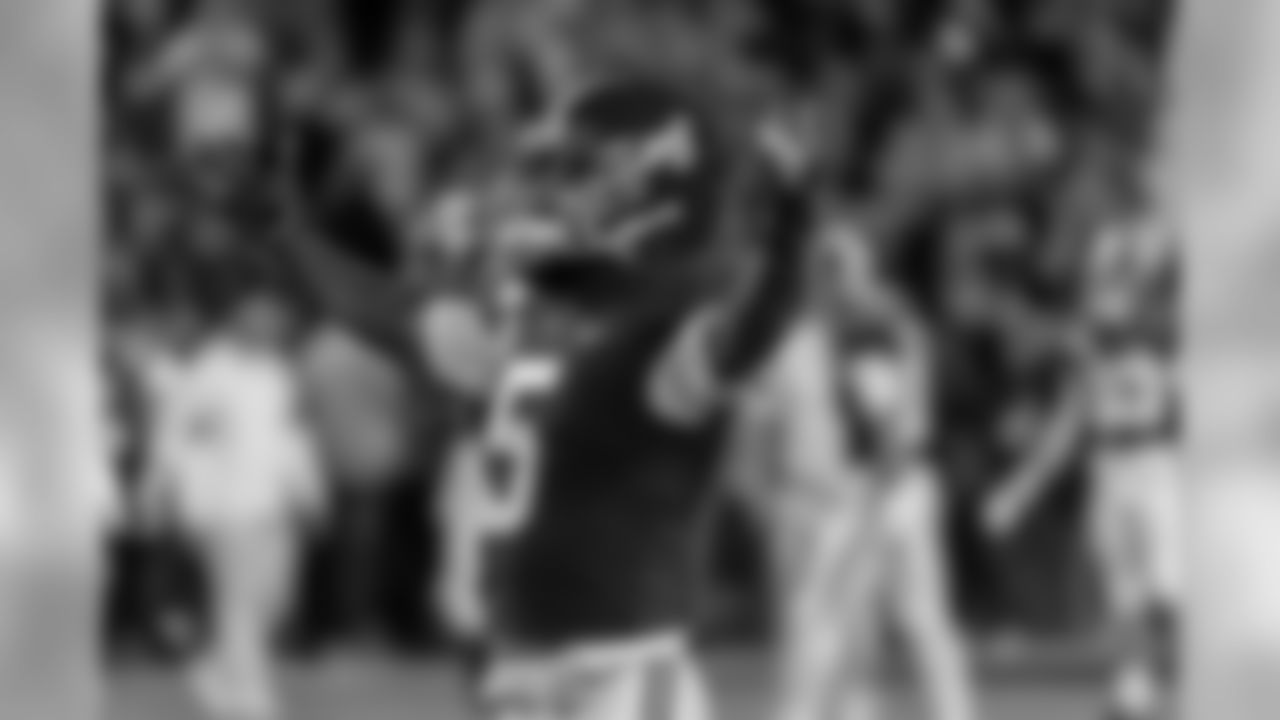
CB | Shyheim Carter | Alabama
Carter can cover a ton of ground and make plays on the ball, which is exactly what Sean McDermott and Leslie Frazier are looking for in Buffalo's defense.
Alabama defensive back Shyheim Carter (5) warms up before an NCAA college football game against Tennessee, Saturday, Oct. 19, 2019, in Tuscaloosa, Ala. (AP Photo/Vasha Hunt)
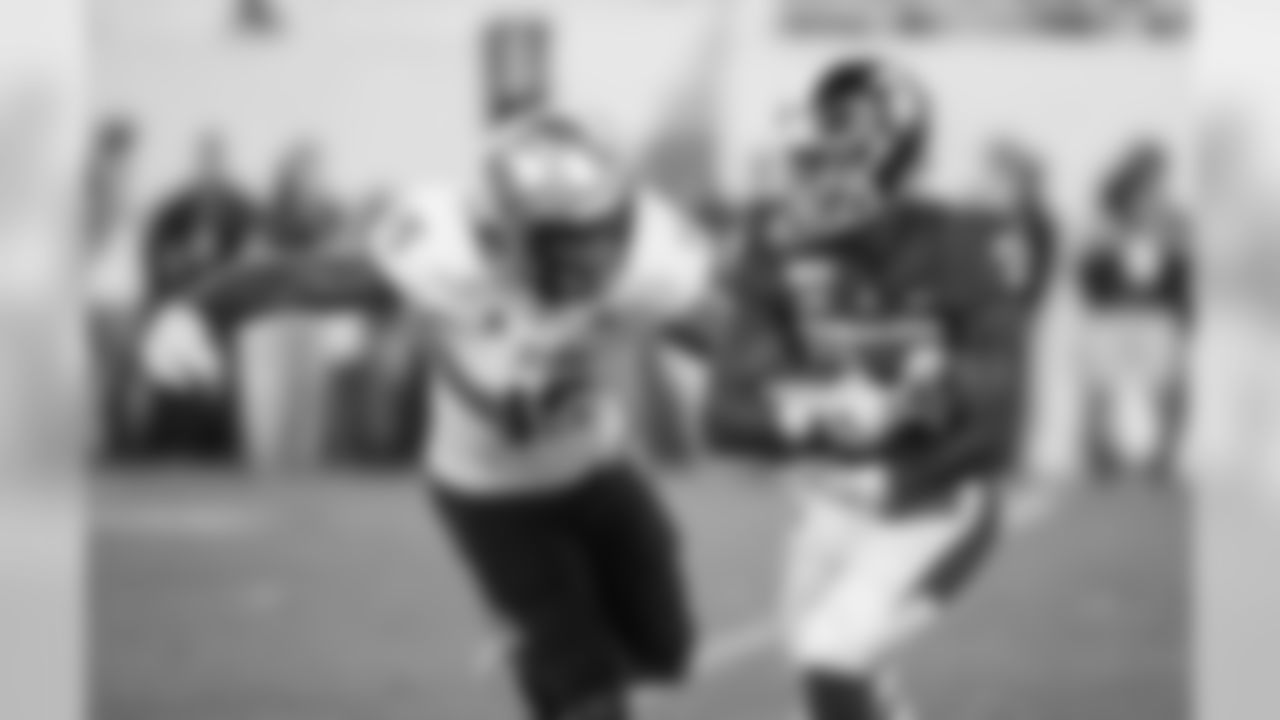
DE | Trevis Gipson | Tulsa
Long and fast. Trevis Gipson could be a sleeper prospect that could make a big impact as a rookie with his pass rushing ability.
Tulsa defensive end Trevis Gipson (15) attempts a tackle on Michigan State running back Elijah Collins (24) during the second half of an NCAA football game on Friday, Aug. 30, 2019 in East Lansing, Mich. Michigan State won 28-7. (AP Photo/Tony Ding)
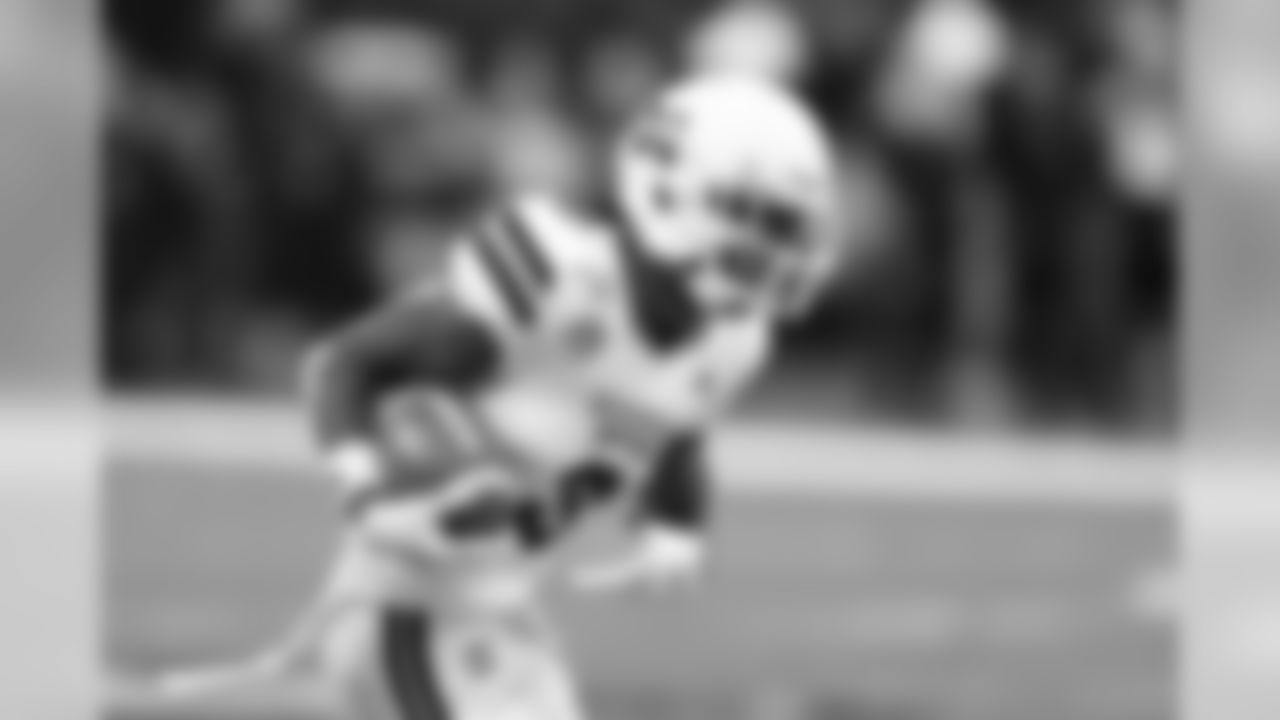
CB | Cameron Dantzler | Mississippi State
Dantzler is great in press coverage, and could be a good candidate to learn from Buffalo's current group at CB.
Mississippi State cornerback Cameron Dantzler (3) returns an interception against Louisiana-Lafayette during the first half of an NCAA college football game in New Orleans, Saturday, Aug. 31, 2019. (AP Photo/Chuck Cook)
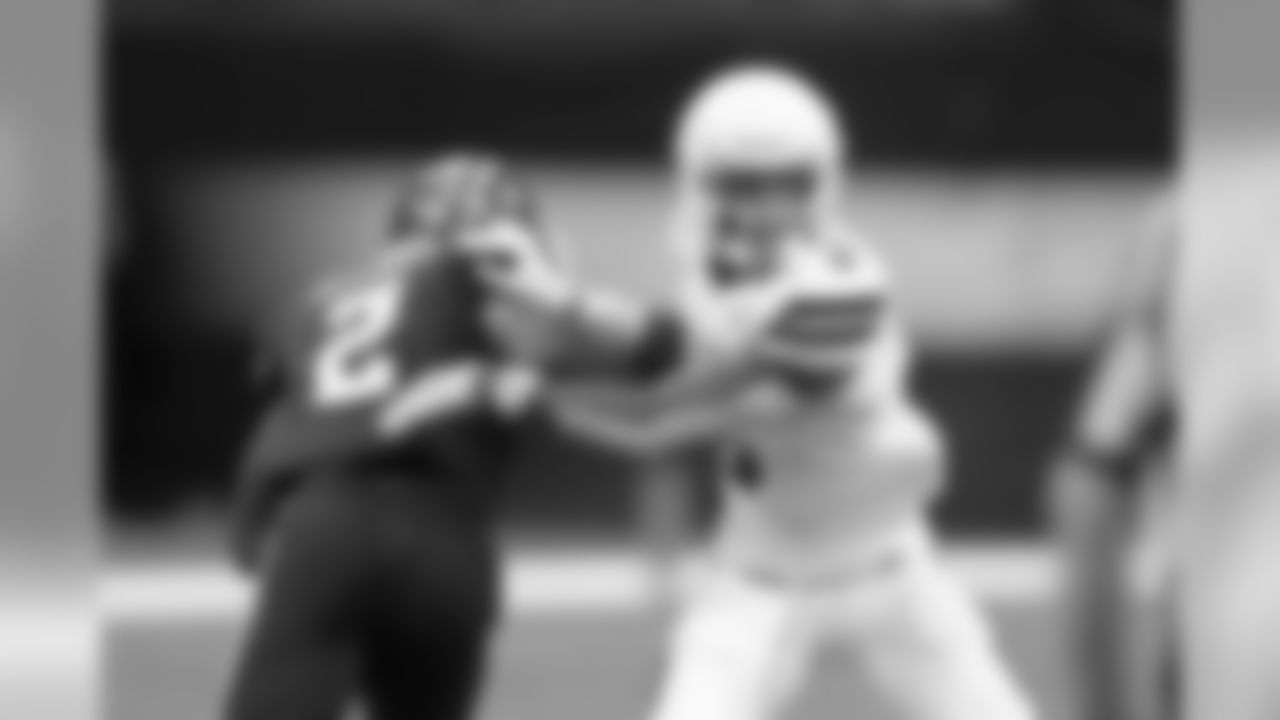
CB | Cameron Dantzler | Mississippi State
Dantzler is great in press coverage, and could be a good candidate to learn from Buffalo's current group at CB.
Mississippi State cornerback Cameron Dantzler (3) defends Louisiana-Lafayette wide receiver Ja'Marcus Bradley (2) in the second half of an NCAA college football game in New Orleans, Saturday, Aug. 31, 2019. Mississippi State won, 38-28. (AP Photo/Chuck Cook)
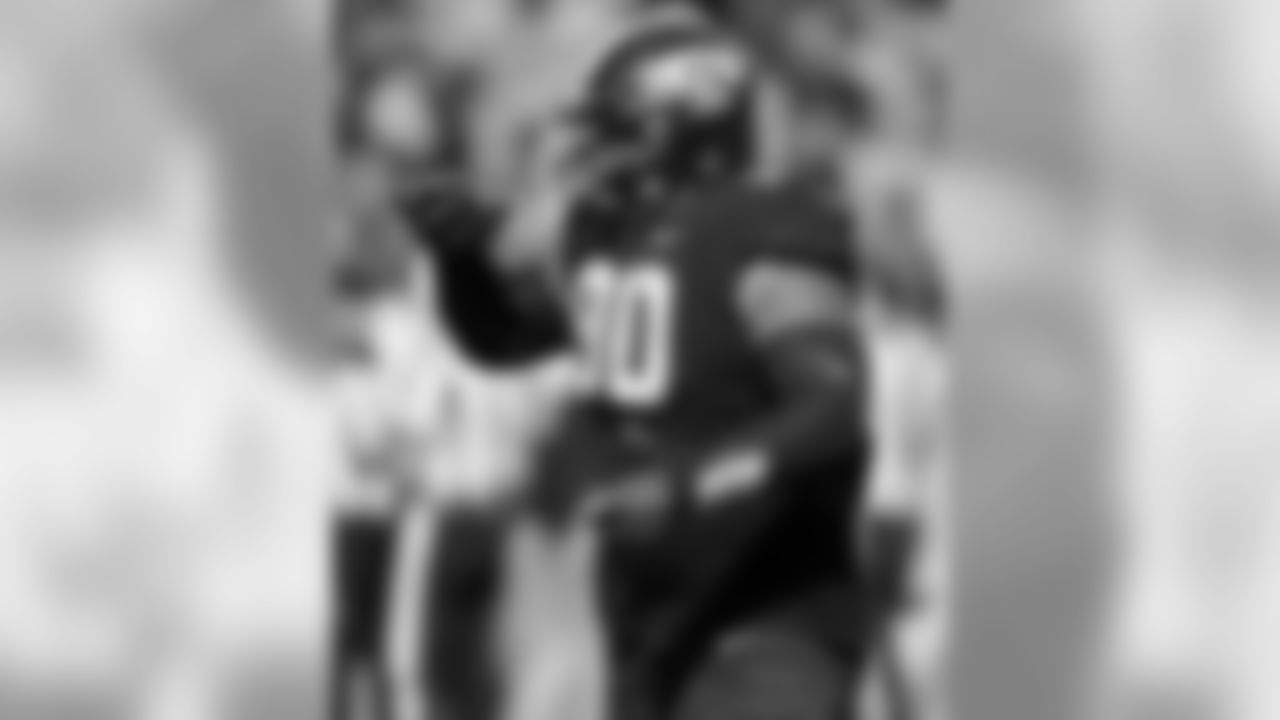
DT | Ross Blacklock | TCU
If Buffalo looks to add more size on the interior of the DL to help with run defense, Blacklock could make a lot of sense in the second or third round.
TCU defensive tackle Ross Blacklock (90) rallies his teammates during the second half of an NCAA college football game against Baylor, Friday, Nov. 24, 2017, in Fort Worth, Texas. TCU won 45-22. (AP Photo/Brandon Wade)

DT | Ross Blacklock | TCU
If Buffalo looks to add more size on the interior of the DL to help with run defense, Blacklock could make a lot of sense in the second or third round.
TCU defensive tackle Ross Blacklock poses for a portrait during the 2020 NFL Scouting Combine, Wednesday, Feb. 28, 2020 in Indianapolis. (Todd Rosenberg via AP)
There are certainly different ways to approach the NFL draft. Seattle GM John Schneider has traded down and out of the first round in six of the last eight years. The other two years he traded the team's first-round pick away to acquire a player. Of course one of his more notable trades was a move up the board last year to select WR DK Metcalf.
Indianapolis GM Chris Ballard subscribes to a similar approach of stockpiling picks. He traded out of the third spot in 2018 to move down three spots to sixth overall so the Jets could draft Sam Darnold. The Colts got five players over the next two drafts in that deal, G Quenton Nelson, OL Braden Smith, LB Kemoko Turay, RB Jordan Wilkins and CB Rock Ya-Sin.
L.A. Chargers GM Tom Telesco is more like Beane, choosing to trade up to acquire a player he covets. He did so in 2013 to acquire LB Manti Te'o, in 2014 to land LB Jeremiah Attaochu and in 2015 to get DE Melvin Ingram.
Is there a tried and true formula?
"I actually believe in Beane's philosophy," said Sirius XM NFL Radio analyst Mark Dominik. "I think it held true for me back when I drafted Lavonte David as GM of the Bucs. I was trying to trade up feverishly to go back and get him, and I didn't change my offer from a two to four. I knew what I was willing to give up to make sure I got a player that I coveted. So even as he kept sliding down the board from where I thought he should go, I didn't want to start to get clever and say well, now it's worth two and a five. So I'll offer a two and a five. I was willing to give up the four even though by the point chart that I was maybe being a little too aggressive. I wanted the player."
David was a first-team All-Pro by his second season.
NFL draft analyst for the 'The Athletic,' Dane Brugler believes doing what you must to land a prized prospect, more often than not, is a wise move.
"Bills fans should love Beane's approach because that should be the attitude of every general manager. Be aggressive go get your guy," Brugler said. "If you think that a player is an ideal fit, not just schematically, not just with your coaching staff, but culture-wise and what he means your locker room, and how he can help you and the rest of the team. It's not just him independently in a vacuum. It's how he could potentially help other people on your roster on the field because his skill set is so unique because his personality is such a great fit for that position room. That impact comes down to the evaluation."
And that is admittedly where some NFL clubs get in trouble. Everyone knows the draft is an inexact science, so giving yourself fewer total draft choices to bank on one prospect in particular does carry risk. But faith in your scouting department and a general manager's own opinion is what must weigh heaviest in such a decision.
"I think if you have that kind of conviction towards a player, I think it's hard to ever feel like you're going to lose in a deal, even though you may be giving up a little more value for the player than what the point chart suggests," said Dominik. "So I'm a big proponent of that approach."
"If you're wrong on the evaluation, then it might blow up in your face, but if you're right on the evaluation, and you're very confident in that, then absolutely by all means you go and get your guy because that's what it's going to take to build a championship team," said Brugler.
The Dallas Cowboys were presented with just such an opportunity in the 1977 NFL draft. Expansion teams Tampa Bay and Seattle had the first two picks in the draft that year, but the Seahawks were besieged with trade offers that year. Dallas ultimately gave up their first-round pick at 14 and three second-round picks they had accumulated for the second pick in the draft, which they used to select Hall of Fame RB Tony Dorsett.
"We had a pretty good football team," said Sirius XM NFL Radio draft analyst Gil Brandt, who was the Cowboys VP of Player Personnel at the time. "But we aggressively went after Tony Dorsett and we became a Super Bowl team."
The Cowboys had made the playoffs in 10 of their previous 11 seasons but would win the Super Bowl the very next season with Dorsett on their roster. He was the final piece of the puzzle rushing for over 1,000 yards on just over 200 carries his rookie year.
"It's the right people in the right spot and the right opportunities," Brugler said. "The good evaluators, I think they can identify that, and then they are aggressive to go and get it. Sometimes it's quality over quantity. If you have to trade a third-round pick to move up a few spots in the second round to go get the guy you want, you're potentially giving up a starter. Instead of arguably having two starters you're only going to have one on your roster, so you better be right about that guy. The quality over quantity argument is something that certainly makes sense to get the right player in your building."
Just because Beane has made four trades up the board the last two years doesn't mean he's not apt to trade down if it makes sense. The key for NFL GMs is to trust their instincts based on the information gathered over many months and the situation sitting in front of them on draft day.
"Brandon Beane might never be a general manager in the NFL again after he's done in Buffalo, but when he looks back at his career, no matter what happens, he can always say, 'Hey, I went and tried to build it my way,'" Brugler said. "He tried to get the guys that he thought, not just him but collectively as a group, that front office thought would help win football games and would influence the scoreboard and would influence the win-loss record. So at the end of the day, he can hold his head high and say, 'We did our best. We didn't just sit back and let the draft come to us and see how it played out.' They were aggressive. So I think that's the right way to do it and Bills fans should definitely be feeling good about the mentality of their front office and their GM."














